#guillermo del toro is the only filmmaker ever actually
Text
Guillermo del Toro’s Pinocchio versus all the other iterations that have come out recently really exemplifies the issue that at a fundamental level the desire to roll out A list actor filled cash grabs of live action remakes of old movies does not understand the nature of media. Certain forms of art- and I feel that I cannot stress this enough- do not mesh well onto a different form of art. Sometimes they can, and it’s wonderful, but very often I’m finding that a lot of remakes are missing the point of how animation is its own medium, stop motion is its own medium, video games and books and even television vs movies are all their own mediums. You really have to know when you’re making something if this is the right form of it, because if not it ends up looking cheep despite the millions of dollars spent to create the whole fucking thing. And a little bit of love and creativity doesn’t hurt either. I think studios to a large degree underestimate how much the creator’s passion imbued in a film translates through the screen to an audience, because we really can feel it. Sure, we all watch shitty TV and moves once in a while, but when something actually moving comes around there’s never any doubt of how masterful it is. And you just don’t ever really get that with soulless billion dollar remakes. Anyways Guillermo del Toro fucking rocks and everybody should go watch Pinocchio.
#actually though#its so gorgeous and well voice acted and moving i just want to inject that level of care for a project into my veins#fuck around and find out or actually put thought and artistry into your movies#guillermo del toro is the only filmmaker ever actually#guillermo del toro's pinocchio#guillermo del toro#pinocchio#pinocchio 2022#animation#stop motion#movies#andis thought geyser
3K notes
·
View notes
Text
Watched the Junji Ito collection on Netflix and it was predictably disappointing, and made me even more antsy for the Uzumaki anime to finally come out because that actually looks like it would be good.
And it got me thinking about how hard it would be to really capture the essence of Ito’s work because his particular style is so… visceral. Not to mention the psychological aspects.
But I just saw a post on my dash of what appeared to be concept art from Guillermo del Toro’s Cabinet of Curiosities. And the body horror of that art coupled with the style made me realize that GDT might very well be the only filmmaker who could ever properly adapt any of Ito’s works.
Like, just imagine it. …. I think my brain is putting its foot down and refusing to fully conceptualize the idea because that might actually be more horror than it could handle.
But that’s exactly why such a collab should happen.
#in total fairness and honesty I've never seen the Japanese Tomie films but I heard they're kinda meh#bruh just imagine a GDT-made Tomie show#or again literally anything fuck I'd take another Junji Ito anthology if it was done by GDT#Bree's stuff#about me#about Bree
1 note
·
View note
Photo
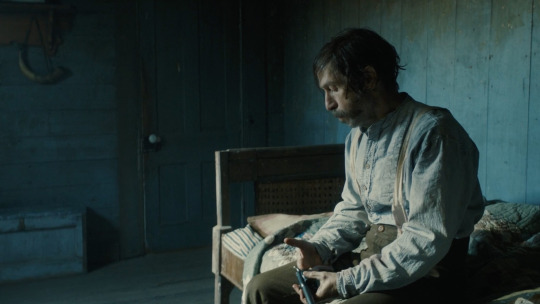
Work Horse.
Taking on a rare leading role in his decades-spanning career, national treasure Tim Blake Nelson speaks with Mitchell Beaupre about demystifying heroes, reinventing genres and something called a quiche Western.
“This film is unapologetic about all the tropes that it’s deploying in service of telling the story... You’ve got a satchel full of cash. You’ve got gunslinging, physical violence, and feeding somebody to the pigs.” —Tim Blake Nelson
Described by Letterboxd members as “a national treasure” who “makes everything better”, Tim Blake Nelson is a journeyman actor who has tapped into practically every side of the industry since making his feature debut in Nora Ephron’s This Is My Life back in 1992. Whether you are a Marvel fanatic, a history buff or a parent trying to get through the day, the actor’s distinctive presence is a charming sight that’s always welcome on the screen.
Tim Blake Nelson is one of those rare actors who unites all filmgoers, a man genuinely impossible not to love, which certainly seems to be the case for Hollywood. Checking off working relationships with directors ranging from Terrence Malick and Ang Lee to Hal Hartley and Guillermo Del Toro, Nelson has covered the boards, even crossing over into directing and writing, both in films and on the stage.
Yet, despite being a renowned talent who can take a smaller supporting role in a massive Steven Spielberg blockbuster starring Tom Cruise and carry the film, Nelson-as-leading-man sightings have been few and far between. In fact, it’s quite a struggle to find a film with Nelson in a leading role, as even playing the titular role for directors who understand his greatness still results in him only appearing in the opening section of an anthology feature.

At last, the leading role Nelson fans were in need of has arrived in the form of Old Henry, a new Western from writer/director Potsy Ponciroli. Nelson plays the eponymous Henry, a widowed farmer with a mysterious past who makes a meager living with his son (Gavin Lewis), doing his best to leave his old life behind and hide away from the world. Things get complicated when Henry stumbles upon a satchel of cash and a wounded stranger (Scott Haze), bringing them both into his home. Soon, a dangerous posse led by an intimidating Stephen Dorff comes calling, setting the stage for an old-fashioned throwdown in this twisty Western siege thriller.
Premiering at the Venice Film Festival, Old Henry has been warmly received on Letterboxd. “Old Henry feels like the culmination of Tim Blake Nelson’s twenty-plus-year career, but from another dimension, where he’s highly regarded as a leading man”, writes Noah, speaking not only to the strength of Nelson’s performance, but also to the fact that this leading role shouldn’t be such a rarity. Todd awards Nelson the prize for “Best Facial Hair in a 2021 film”, before applauding the actor for pouring “every emotion in his body to play Henry”.
Letterboxd’s East Coast editor Mitchell Beaupre saddled up for a chat with Nelson about the intentional hokiness of the Westerns that made him fall in love with filmmaking, how the Coen brothers put other directors on notice, and the fatherly joy of keeping it all in the family.
I’ve seen a lot of interviews with you discussing your career as an actor, a writer, and a director. You always speak with such reverence for the art. Where does that passion come from for you? What made you want to pursue this field?
Tim Blake Nelson: It’s funny, doing these interviews for Old Henry has been reminding me of my introduction to filmmaking as an art. I’ve realized that I had never quite located it, but it really started with the Sergio Leone Westerns, which I would see on television when I was growing up in Oklahoma in the ’70s. Before that, going to the cinema was always invariably a treat, no matter what the film, but I would just be following the story and the dialogue.
The Sergio Leone movies were the first ones that exposed subjectivity in telling stories on film to me. That was where I became aware of the difference between a closeup and an extreme closeup, or how you could build tension through a combination of the angle on a character with the editorial rhythm, with the lens size, with the music in addition to the dialogue and the story.
How old were you when this shift in your understanding of cinema was happening?
I think it was across the ages of ten and eighteen, where I suddenly realized that this was an auteur here, Leone. There was a guy behind all these movies I was seeing—and in Oklahoma, you could see a Sergio Leone movie every weekend. This was a man making deliberate and intelligent decisions in everything that I was seeing.
I started noticing that a character was in a duster that goes all the way down to his boots, even though that’s not necessarily accurate to the Old West. That’s something else. Also, why is he wearing it in the desert? Would that have been very practical? And look at that cigar Clint Eastwood is smoking. It’s not smooth, it looks like it was a piece of tree root. Then later I learned it’s a particular kind of Italian cigar, but somehow it was defining this genre of Western. I marveled at that, and found it unbelievably thrilling to discover. I loved the stories and the dialogue and the intentional hokiness of it all. All of it was conspiring to teach me to venerate this form.
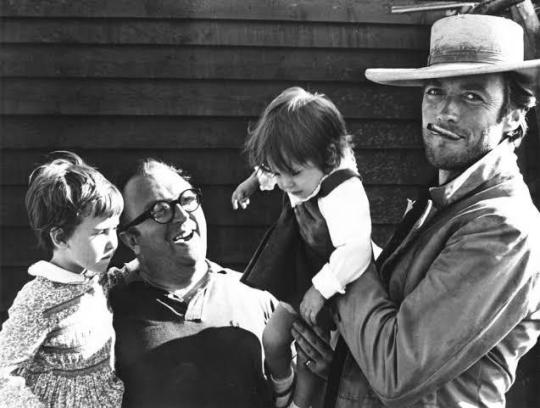
Sergio Leone, his daughters, and Clint Eastwood on the set of ‘The Good, the Bad and the Ugly’ (1966).
The connection there is interesting between the Leone Westerns to where Old Henry is at now. You’ve talked before about how the Western genre is one that is reinvented over and over throughout the years—
Oh, you do your homework!
I try my best! What would you say defines the current era of Westerns that we’re seeing, and how the genre is being reinvented?
Well, Joel and Ethan [Coen] did a lot of mischief, in a good way, with The Ballad of Buster Scruggs. Genres are always about genres, in addition to their story. So, I would say that Buster Scruggs is the quintessential postmodern Western, if you look at it as one movie instead of as an anthology, because it celebrates the history of the form. The magic of that movie is that it engages you in each story while also being a meditation on death. That’s what connects each one of those tales, and then it’s also a meditation on storytelling to boot. In the final chapter, you have a character talking about why we love stories, and he’s telling it to a bunch of people who you’ll learn are all dead.
The stories are a way of delaying the inevitable mortality.
I mean, look at that. It’s such an accomplishment. With that movie, I think Joel and Ethan put filmmakers on notice that Westerns had better always be also about Westerns, because whether you like it or not, they are. I think they probably came to understand that when they were making True Grit, although knowing the two of them they probably understood it already.
Do you feel there’s a direct correlation between a movie like Buster Scruggs and Old Henry, in this era of postmodern, revisionist Westerns?
How it impacts a movie like Old Henry is that you have Potsy embracing the Western-ness of the movie. This film is unapologetic about all the tropes that it’s deploying in service of telling the story. You’ve got the cantankerous old man hiding a past, who’s a maverick who wants to keep the law and the bad guys off his property. He wants to be left alone. You’ve got a satchel full of cash. You’ve got gunslinging, physical violence, and feeding somebody to the pigs. Yet, it’s all accomplished without irony in a very straightforward way that is utterly confident, and in love with the genre.
I think ultimately that’s why the movie works, because it’s very front-footed. It’s not hiding from you. It’s not deceiving you and trying to tell you it’s something that it isn’t. It’s a good, straightforward Western.

Tim Blake Nelson as the titular singer in ‘The Ballad of Buster Scruggs’ (2018).
That’s a bit different from those Leone Westerns, with all of their anachronisms.
I remember when the movie Silverado came out when I was growing up, and people were calling it a “quiche Western”, which was funny. That was what they would call it in Oklahoma because it had a bunch of movie stars in it, who weren’t known for being in Westerns. It was the Sergio Leone crowd calling it that. I went and saw it, wondering, “Well, if it’s a quiche Western, then why is everybody talking about it?” I saw it, and I loved it. Those folks putting it down like that were wrong. It’s actually a straightforward, hard-boiled, hardcore unapologetic Western. You don’t like some of the movie stars in it, but get over it. The reason that movie works is because it’s straight-ahead and well-told, and I think that movie holds up.
Old Henry is the same kind of animal. It’s more in the tradition of Sergio Leone—or, actually, I would say more in the tradition of Unforgiven. That was a big influence on Potsy.
Unforgiven was marvelous in the way it demystified that old black hat/white hat mentality of Westerns, opening up a more multi-dimensional understanding. You’re no stranger to that. A series like Watchmen takes that approach with superheroes, who in a sense hold the position now that Western heroes used to hold culturally. Do you find there’s more of a demand these days to challenge those archetypes who used to be put on pedestals—be they superheroes, cowboys, police—and provide a deeper analysis?
Absolutely, yes. At the same time, I think the demystified Western hero goes back to John Wayne in The Searchers. I think it really started with that character, one of the greatest characters ever in a Western. There’s One-Eyed Jacks, with Marlon Brando, which was made just after The Searchers, and again embracing this concept of an extremely complicated man. I don’t think you get the Sergio Leone movies without that.
I always think of McCabe & Mrs. Miller as a Western that was doing something totally different than anything I had seen before.
That’s another one, with that final image with the character smoking opium, going into oblivion after the demise of Warren Beatty’s very flawed character, after you’ve watched what it has taken to really build that town. You have a director, Robert Altman, making the deliberate choice to shoot in order so that they can build the town while they’re shooting the movie, and you really get the cost of it. I think there’s a lot of history to get to a place where a movie like Unforgiven can happen. Then Clint comes along and, as he often does, moves it forward even more.

Gavin Lewis as Henry’s son Wyatt in ‘Old Henry’.
That’s a film that tackles legacy, as does Old Henry, which at its core is ultimately about the relationship between a father and his son. You got to work on this film with your own son, coincidentally named Henry, who was part of the art department. What is that experience like, getting to share your passion with your son on a project together?
Well, I think something that is true for the character of Henry and for myself, and perhaps all of us, is that we all want our kids to have better lives than ours. I want that to be true in every respect. Mostly, I want them to be more fulfilled than I have been. My kids look at me when I say that and say, “Thanks a lot Dad for raising that bar”, because they see that I have a pretty good life. Which I do, but I still think they can be more fulfilled than I am, and I want that for them. One of the great privileges of this movie was to watch my son—who was the on-set decorator—work his ass off.
Those are the words of an incredibly proud father.
He’s a work horse, and he’s learning about filmmaking, and I think on his current trajectory he will go beyond where I’ve gone as a filmmaker, directing more movies than I’ve been able to direct. Do a better job at it, too. He’s also a singer-songwriter, and I think he can have a venerable career doing that if he wants, but he wants to make movies too, and I hope that’s going to happen for him. It was a thrill to watch him do the work, the twelve- and fourteen-hour days, and after every take resetting and making sure everything was right. It felt like an accomplishment to see him take on that responsibility and do the real work every day.
Related content
SJ Holiday’s lists of Essential Neo-Westerns and Essential Modern Westerns
The Best Neo-Westerns of the 21st Century, according to JS Lewis
Our interview with Slow West director John Maclean
Follow Mitchell on Letterboxd
‘Old Henry’ is in US theaters now and on VOD from Friday, October 8.
#tim blake nelson#old henry#western#westerns#western movies#sergio leone#clint eastwood#stephen dorff#letterboxd#mitchell beaupre#coen brothers#coen bros#buster scruggs#joel coen#ethan coen
19 notes
·
View notes
Link
Guillermo Del Toro is no stranger to widespread acclaim, especially from his ride or die legion of fans. Pan’s Labyrinth, the Hellboy duology, the list of genre-bending, timeless masterworks goes on. Coming off his 2 Oscar wins for The Shape of Water in 2018, and moving into finally releasing his animated Pinocchio film from the pits of development hell along with an adaption of Nightmare Alley next year, this couldn’t be a more thriving time for the Mexican auteur. Though amongst all the praise and glory, something has still felt missing these last handful of years. Besides his Oscar-winning film, Del Toro’s works prior to the 2010s are what generally buzz conversations of his genius. Those aforementioned films did, after all, skyrocket his name to fame. His titles from the last decade, however, are just as crucial to the Del Toro canon and emphasize his greater influence as a filmmaker. One, in particular, has seemingly gotten by in its young life at the hands of few. But now that Crimson Peak has officially turned 5, it’s time to turn that few into many.
Del Toro’s trifecta of the 2010s (not counting his work on television) stand out vastly from one another. Pacific Rim, Crimson Peak, and The Shape of Water: all love letters penned from the ‘nichest’ corners of his mind. These 3 arguably boast more diversity in genre than Del Toro’s 5 films of the 2000s (3 comic-book adaptations and 2 Spanish-set fantasies). Not a criticism, as established, those films now flaunt an immovable place within the cultural zeitgeist. Though with a career notoriously marked by a slew of unrealized projects (more on this later), it’s not often recognized how the ideas that did make the cut still lead a crystal clear trajectory in Del Toro’s growth as a storyteller. In the eyes of many, Del Toro pulls ideas out of a hat and gambles on which one actually sees the light of day. Humorous sure, but this is far from the truth.
Each Del Toro project feels like a pivotal step for what would come later, take his work on Trollhunters paving the way for his upcoming first animated feature for instance. Despite this trajectory, Crimson Peak feels criminally unsung 5 years later. Pacific Rim continued its life with a sequel and more planned spin-offs. The Shape of Water literally set a new bar for the Academy. This leaves Crimson Peak feeling like the pushed aside middle child of this trio. This isn’t a call for a sequel, and ‘underrated’ gets tossed around very loosely in modern film discussion. But for cinema as quintessential as Crimson Peak, it just doesn’t feel like it gets enough recognition – especially when the current film industry is seeing less big-budget, R-rated projects heavily steeped in genre.

You can easily trace Crimson Peak‘s short-lived spotlight back to its marketing. The timely October release and scare-heavy trailers sold a classic ‘Haunted House’ horror, when in reality, Del Toro’s film is a Gothic Romance. Set in the early 1900s, an aspiring American writer, Edith Cushing (Mia Wasikowska), is swept away by a promising English baronet, Thomas Sharpe (Tom Hiddleston). They discover true love and marry, leading the young newlywed to her husband’s decaying mansion in the English hills. The age-old manor is slowly, but surely, sinking in red clay – the very source of Sharpe’s wealth. Here Edith is forced to live with her new sister-in-law, Lucille Sharpe (Jessica Chastain), a reserved yet commanding force who works to hide the true nature of the house and its endless secrets. Mystery lingers as untamed lust, envy and greed unfold between the mansion walls, not leaving enough room for the restless red-colored spirits who haunt them. When it snows on this cursed hill, the clay surfaces, making it seem as if the land bleeds. Given more than just red clay rises from beneath, a deeper meaning is given to the place locals call ‘Crimson Peak’.
Just like the clay at the center of its mystery, Crimson Peak is an amalgamation, but of genre. It would be novice to expect anything less from Del Toro. The Gothic elements call back to many classic tales, such as Alfred Hitchcock’s adaption of Rebecca and, of course, Charlotte Brontë’s Jane Eyre. On the horror side, homage is paid to Stanley Kubrick’s The Shining and Jack Clayton’s The Innocents. It’s a devilish blend that only this filmmaker could pull off so beautifully. And oh is Crimson Peak so god damn gorgeous. To contrast common period pieces that go for muted or sepia-toned color palettes, Del Toro turns the saturation on high. The result is an eye-popping picture that heightens the core emotions at play: fear, pain, and more importantly, love. Simply mesmerizing, avid fans will be quick to recognize the same shades of golden yellows, sea greens, and ruby reds found in Del Toro’s other works. It feels right at home in his filmography visually, while packing its own unique punch.
Red, a color mainly associated with passion, here instead intricately represents endless bloodshed. A twist that would suggest Crimson Peak is just as equal a horror film as it is a love story. Regardless of what might have been initially marketed to audiences in 2015, this film is a Gothic Romance from start to finish. Del Toro himself made this distinction clear to the studio from the get-go and repeatedly draws the line whenever given the chance. Yet, much like the rest of his repertoire, Crimson Peak utilizes horror not as a means to an end, but as a means for introspection. Yes, there are classic horror conventions such as jump scares, but it couldn’t be more obvious that Crimson Peak isn’t trying to evoke the same kind of high and dry fear other films heavily rely on. Del Toro is actively trying to get under your skin to achieve a hell of a cathartic viewing experience.

The ghosts of our past and how we let them define us is a core theme in Crimson Peak. The film opens on a flashback in which Edith is visited by the charcoal black ghost of her recently deceased mother. The nature of this visit sets the groundwork for the rest of the narrative. Mother Ghost, dreadful in appearance, doesn’t necessarily come to haunt her child, but to warn her. “Beware of Crimson Peak,” she says. The way Edith takes in this otherworldly occurrence, and those that follow, sets her apart from everyone else in the film. Wherein others flee from or lock away the ghosts of their past, she learns how to wear them on her sleeves – reaching out to the dead multiple times in the story, each attempt more confident than the last. Not too dissimilar from what Del Toro was playing with before, Jaeger pilots confronting past trauma in their quest to defeat Kaiju. At the same time, the transformation that occurs in Crimson Peak when neglected demons consume you from the inside – humans becoming the true monsters of their supernatural tales – would only be amplified in Del Toro’s next film.
Every minute detail coincides with this strategized, therapeutic use of horror. And to the everyday moviegoer trained by common tropes, Crimson Peak is quite deceptive. Just like Mother Ghost at the beginning of the film, the red spirits never manifest with the intent to cause physical harm, but instead to give messages and guide. Red clay seeps down the walls and the mansion ‘breathes’ as the country winds burst in. The house feels alive in the most cinematic sense possible, but the case as to it being ‘horrifying’ is not so black and white. Expertly designed to every inch, there is plenty of beauty to be found in the manor. Much of it has just been corrupted by a debauched affair – keeping this story rooted as a Gothic Romance. Subversion has always been the name of Del Toro’s game, and it’s within Crimson Peak that he uses it to mix genre so well while still staying true to his vision.
Though Crimson Peak saw Del Toro take subversion to a new level, notably with his main character. This film is a key chapter in his overarching legacy; not the first of his works to be lead by a defiant woman, but the first to have the female hero entangled in an unabashed love story. Effortlessly played by the brilliant Mia Wasikowska, the not so damsel in distress at the center of Crimson Peak is one of the most significant characters of Del Toro’s career. In discussing Gothic Romance with The Mary Sue in 2015, Del Toro explains: “This is quintessentially a female genre, that was written with characters that were very complex, very strong. I wanted to make a movie in which to some degree I recuperated and, maybe if possible, enhanced all that.” And enhanced he did for every central male character acts in more distress than Edith ever does, even when she is literally at the edge of death. A more than welcome change of pace that makes for a more resonating film.
Edith’s willingness to tackle the unknown is captivating and her vigor inspiring. But she isn’t absolved of frailty. For someone who comes to terms with facing the dead, her sheer vulnerability to heartbreak and suffering brings great humanity to the role. Hardly recognized, but Edith is one of Del Toro’s most self-reflective protagonists. A marginalized writer, inspired by the great Mary Shelley no less, in the midst of drafting her magnum opus, she immediately faces backlash from her novel’s inclusion of the paranormal. “It’s not [a ghost story]. It’s more a story with a ghost in it. The ghost is just a metaphor… for the past,” she says – giving Crimson Peak a rare Del Toro tongue-in-cheek quality that he utilizes until the credits roll. Meta enough given that the crimson ghosts Edith later encounters are, in fact, echoes of the past, but when looking back on the public’s initial perception of the film, it creates a charming, albeit ironic, wit only found here.

Additionally, when tracing back to Crimson Peak‘s pre-production days, you’ll find something even more profound. Penned by Del Toro and an old collaborator, screenwriter Matthew Robbins; this was the first script completed after the release of Pan’s Labyrinth in 2006. The two first worked together an entire decade earlier on Mimic, which has now gone down as the only film Del Toro has truly lost to studio interference. Del Toro was supposed to direct Crimson Peak in the late 2000s, but along came Hellboy II and his involvement in launching The Hobbit (another R.I.P). Through this hectic time, Del Toro would reunite with Robbins in writing 2010’s Don’t Be Afraid of the Dark, directed by Troy Nixey. However, the two also spent time together writing something else: an adaptation of H.P. Lovecraft’s At the Mountains of Madness.
For those unfamiliar, At the Mountains of Madness is by far one of, if not, the most tragic of this filmmaker’s unrealized projects. After spending years trying to get this dream off the ground, Del Toro had the following to say to Empire in 2010: “It doesn’t look like I can do it. It’s very difficult for the studios to take the step of doing a period-set, R-rated, tentpole movie with a tough ending and no love story.” The payoff of Crimson Peak being a period-set, R-rated, tentpole film only 5 years after that statement couldn’t be sweeter. In the film, Edith is told to insert a love story for the better of her novel. Del Toro is obviously commenting on expectations tied to gender here, but you can’t help but wonder if he’s also referring to one of the biggest thorns in his own writing career – one that also ties back to writing partner Matthew Robbins.
When faced with the question, Del Toro has consistently said that all of his films carry an inherent Mexican touch just from the utter fact that they come from him, and Crimson Peak is no different. Whether if deriving from his personal experiences with tackling genre, both on and off paper, or from actual events tied to his life – Del Toro reimagines two separate ghostly encounters experienced by him and his mother through Edith – this film beams with the very essence of Del Toro’s soul. Perhaps most personified when the marginalized writer gets bloody and fights back with nothing but her pen, a visual that cements this as an important stepping stone in his career. It’s a fascinating through-line, connecting to very different segments of his canon while still defining a clear path. The mending of our wounds and subversion of gender roles is continued from Pacific Rim, while setting a bold new course for delving into unfiltered, mature romance in The Shape of Water.
This is only a fraction of what makes Crimson Peak quintessential Guillermo Del Toro. Gothic Romance has long been part of this auteur’s framework, and you would be remiss not to indulge in all of its glorious melodrama. Even if it isn’t your cup of tea, Del Toro will make it so. Reaching its 5-year anniversary, the film hits stronger than before. The intricate motifs, compelling use of practical effects (complete with the involvement of Del Toro veteran Doug Jones), and cathartic use of horror make for something that has yet to be replicated by a major studio. Its lacking box office performance suggests that maybe the world merely wasn’t ready for this masterwork? But just like its characters, we hold the power to define what comes next. Del Toro himself has previously ranked Crimson Peak as one of the 3 best films he’s ever made, and straight-up called it the most beautiful. Take his word and dive in no strings attached, because who knows when we’ll get another large scale, unapologetic Gothic Romance with this much grandeur.
#Crimson Peak#guillermo del toro#Tom Hiddleston#Mia Wasikowska#Jessica Chastain#Charlie Hunnam#Jim Beaver#Doug Jones
27 notes
·
View notes
Text
Book Review: The Living Dead by George A. Romero & Daniel Kraus

Prior to his death in 2017, filmmaker George A. Romero - best known for single-handedly inventing the zombie genre as we know it with his 1968 film, Night of the Living Dead - was writing a novel titled The Living Dead. After his passing, Romero’s estate collaborated with author Daniel Kraus to complete it. Although perhaps not the most obvious choice, Kraus is no stranger to the genre nor working with its masters (having previously co-authored two books with Guillermo del Toro, including the novelization of The Shape of Water), and he more than rises to the challenge.
The Living Dead finds Romero returning to the initial zombie outbreak, a subject he previously explored twice in his films; first in Night of the Living Dead, then again in Diary of the Dead. The sprawling, 656-page tome is split into three acts: The Birth of Death, from patient zero through the eventful first weeks of the dead rising; The Life of Death, an overview of the decade that followed; and The Death of Death, which picks up 15 years after the outbreak.
Akin to Stephen King's The Stand, the novel digs into the minutia of an assortment of characters' backstories to the point where the reader feels as if they truly know them, then hops around between their journeys until many of them intersect. The first act is familiar to anyone who's ever seen a zombie movie, but in the capable hands of Romero and Kraus, it's never dull. The middle section is kept brief; a smart choice since Romero's films cover that stage of the outbreak so adroitly. The final act is the most engrossing, as it traverses new territory previously unexplored in Romero's oeuvre.
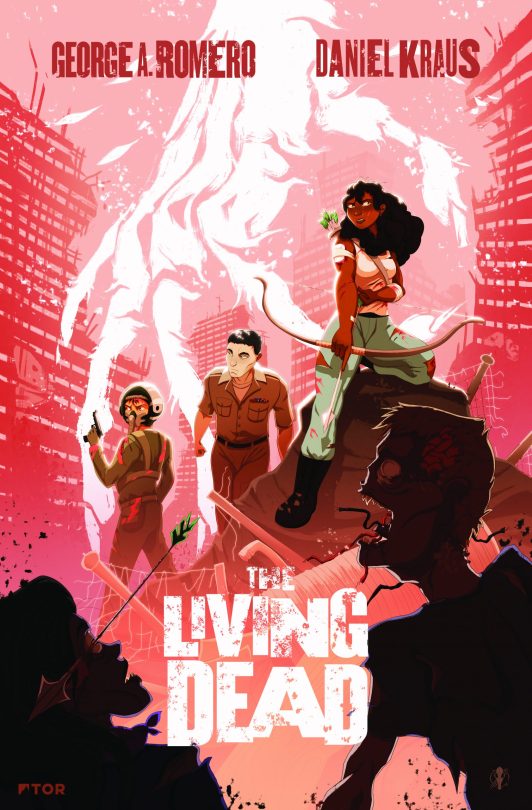
The cast of characters include Etta Hoffman, an aloof census bureau statistician who notices that abnormality that sets the story in motion; Luis Acocella, San Diego’s assistant medical examiner who is the first to witness the dead rise; Greer Morgan, a teenage girl living in a trailer park; Chuck Chaplin, an anchor for a major cable news network; and Karl Nishimura, a master helmsman on his final voyage aboard a nuclear submarine.
A few short passages are told from the zombies' perspective, offering insight into the hunger driving their every move and suggesting something of a hive mind mentality. Carrying on Romero's tradition of largely avoiding the word "zombie," the ghouls are often referred to as They/Them. There is no indication as to what started the plague, but the book furthers concepts that Romero touched on in his films, including the undead becoming increasingly intelligent and interesting developments involving other species.
Romero's acerbic social commentary is present from the first page, where the authors note a political divide regarding a government agency's adoption of a standardized font with the word "Arabic" in its name. The vibrant characters are diverse in race, age, and socioeconomic status, allowing Romero and Kraus to show the impact of xenophobia, racism, and other forms of bigotry. The book also touches on society's over-reliance on technology, news outlets valuing ratings over truth, and even a fictitious actor exposing himself to women.
But The Living Dead's most timely aspect is the outbreak itself. It's downright chilling to read the story after witnessing firsthand how poorly the United States has handled an actual pandemic. In classic Romero fashion, the greatest threat to survival is not the zombies but fellow humans. Most notable is a boorish demagogue that reads as an allegory for Donald Trump, and he's the most vile Romero villain since Day of the Dead's Captain Rhodes. (The president in the book is only referred to in passing and never by name, giving it a more timeless feel than if it were to be set under the current administration.)
While budgetary restraints often limited how much of the apocalypse Romero could show in his films, the written form allows the visionary to explore the collapse of humankind in full. Filled with as much carnage as a classic zombie film, The Living Dead's gore will make the likes of Tom Savini and Greg Nicotero proud. Despite the macabre subject matter, however, there is a lyricism to the writing. Through Romero and Kraus' detailed prose, the reader is able to see the movie play in their mind.
The Living Dead boasts Romero's most poignant ending since Night of the Living Dead - although it was written by Kraus. It's made even more powerful by the note from Kraus that concludes the book. The thoughtful afterword details the coauthor's two-year deep-dive into the novel, including collaborating with Romero posthumously via the intermittent uncovering of his old writings, most of which were never widely released. Left with seemingly insurmountable shoes to fill, Kraus delivers a fitting swan song for the Godfather of the Dead.
The Living Dead will be published in hardcover, e-book, and audiobook on August 4 via Tor Books.
#the living dead#george romero#george a. romero#george a romero#daniel kraus#book#gift#review#article#book review#night of the living dead#dawn of the dead#day of the dead#land of the dead#diary of the dead#survival of the dead
26 notes
·
View notes
Text
Hellboy 2: The Golden Army, a review
(Disclaimer: The following is a non-profit unprofessional blog post written by an unprofessional blog poster. All purported facts and statement are little more than the subjective, biased opinion of said blog poster. In other words, don’t take anything I say too seriously.)
Hellboy 2: The Golden Army, a review

Hellboy was enough of a success for director Guillermo Del Toro to greenlight a sequel and make another movie with Ron Perlman in 2008. This time, Universal Studios was distributing the film.
During Christmas 1955, a young Hellboy is told a bedtime story by his adoptive father, Trevor Bruttenholm, of an ancient war between human and magical creatures. After the magical creatures are driven back by the humans, the goblin blacksmiths extend an offer to Balor, king of the elves, to build him an indestructible mechanical army. Encouraged by his son Prince Nuada, Balor accepts; the Golden Army subsequently decimates humanity. Regretting his actions, Balor forms a truce with the humans, that they will keep to the cities and the magical creatures to the forests. The crown to command the Golden Army, which can only be worn by one of royal blood, is split into three pieces. Nuada, disagreeing with the truce, leaves in exile.
In the present, Nuada returns and begins gathering the pieces of the crown. He collects the first piece from an auction, killing everyone at the site by unleashing tooth fairies, and kills his father for the second piece. His twin sister, Princess Nuala, escapes with the final piece. Meanwhile, at the B.P.R.D., Hellboy is having issues with his girlfriend Liz, and dislikes that their organization must operate in secrecy. Investigating the auction slaughter, Hellboy allows himself to be revealed to the world. In the commotion, Abe Sapien discovers Liz is pregnant; she swears him to secrecy.
If I’m being honest, the Golden Army is a far superior film than the 1st one but, I like the 1st one better. (My tolerance for Jimmy Kimmel cameos notwithstanding).
There are notable changes. Rupert Everett, who played Myers in the previous movie, signed on to star in the broadway show “Kiss of the Spider-woman” and couldn’t return. That’s probably for the best; Myers served his purpose in the 1st movie and the proceedings are much stronger without him. (An amusing line reveals that Hellboy had him transferred to Antarctica).
Furious at Hellboy's actions, the Bureau's superiors send the ectoplasmic medium Johann Krauss to rein him in. With Krauss in charge, the team tracks the tooth fairies to a secret market under the Brooklyn Bridge. Abe finds Nuala, who has obtained a map leading to the Golden Army, and falls in love with her. Hellboy fights and kills Nuada's accomplice Wink, and an elemental forest god that Nuada summons against him. During the fight Nuada questions why he fights for the humans when they have driven the magical creatures into hiding, of which he too is one. Nuala is taken under the B.P.R.D.'s protection.
And of course, we have to talk about Hans Krauss, voiced by Family Guy creator and Frank Sinatra enthusiast, Seth MacFarlane. MacFarlane always had a talent for voice acting (one need only look over to his archive of voicework in Family Guy and American Dad to see that), but he manages to imbue real feeling into Krauss. Not only that, the make up work for Krauss remains spectacular to this day and manages to have the best effects I’ve ever seen with very little CGI.
It’s too bad after this scene, Krauss doesn’t do much of anything else. Yeah, I know there’s a big fight scene where Krauss takes possession of a giant golem and starts wrecking other golems, but other than that, he’s pretty peripheral. Sure, it’s cool looking but it’s just visual filler. In fact, I wouldn’t be surprised if early drafts of the script had Krauss stay the bad guy and be left behind so that Hellboy, Liz and Abe could finish the movie.
The majority of special effects remains impressive to this day. The Troll Market scene remains a delight to watch with all the special make-up and creature feature effects. A lot of filmmakers have attempted to recreate the Cantina scene from Star Wars: A New Hope (even recently from Star Wars: The Force Awakens), but only this scene rivals it in my opinion.
youtube
What’s interesting is the parallel love stories in the work. Obviously, we see the romantic troubles between Liz and Hellboy from the first movie, but the Abe and Nuala relationship remains profoundly cute and touching. Doug Jones has always had talent working under heavy make-up, but it’s through Abe that he’s able to bring the relationship to life (and also hints to how the Shape of Water ended up being so good as it did).
Honestly, any superhero film that can pull off having Barry Manilow on the soundtrack is a plus in my book.
youtube
Through a series of events, Hellboy ends up almost dying with Liz begging for his life even though it’s prophesized Hellboy would bring about the End of the World. But the Angel of Death saves Hellboy and Hellboy returns to kick ass and fight Nuada (in one of the best fight scenes I’ve seen choreographed).
Hellboy defeats Nuada and spares his life, but Nuada tries stabbing him. Nuala commits suicide to stop her brother; the dying Nuada tells Hellboy he will have to choose whether humanity or magical beings must die. Abe psychically shares his feelings with Nuala before she dies. Liz melts the crown apart, deactivating the Golden Army. Hellboy, Liz, Abe, and Johann resign from the B.P.R.D., and Hellboy contemplates his future life with Liz and their baby. Liz corrects "babies", revealing that she is pregnant with twins.
youtube
So, would Hellboy bring about the destruction of the world? Would he ever gain the respect of the humans he risks so much to protect? Would he and Liz ever raise the twins in a House with a yard as he wished for?
Sadly, we’ll never know.
The financial returns of Hellboy 2 were not strong. While earning $160 Million worldwide isn’t something to scoff at, it wasn’t good news for distributor Universal Studios, especially for a film with an $85 Million budget.
So, what happened to Hellboy 3?
Lots of things, actually.
Del Toro went on to other projects (He was actually slated to direct the Hobbit at one point but it didn’t work out). He also tried to get the Lovecraftian horror film, At the Mountains of Madness, greenlit, but Universal was not having a good year at the box office and decided to greenlight more Fast and Furious movies instead.
Eventually, Ron Perlman, after going in Hellboy makeup to meet a terminally ill child for the Make-a-wish foundation, said that a Hellboy 3 script had already been finished, but the deal never went through.
Finally, after years of rumors and gossip, Summit Entertainment (the studio behind the Twilight Films and the Hunger Games adaptations), announced it had the rights and would be rebooting Hellboy… without Guillermo Del Toro … or Ron Perlman… or Liz… or Abe Sapien… and would be operating on a significantly lower budget.
Yeah… (Though they did offer Doug Jones to return as Abe. Jones turned down the role as he was working on Star Trek: Discovery at the time).
For the record, Guillermo Del Toro was actually okay with the franchise moving on without him.
www.cinemablend.com/news/16705…
archive.is/RufIb
I don't own Hellboy, Mike [Mignola] does. So, you know, he is the father of the character and if he wants to reboot it, it's perfectly fine. I got to make two -- that's two more than I thought I would get to make... So you know, as far as I'm concerned godspeed and god bless.
Ron Perlman… not so much.
youtube
While I’m curious of how the new Hellboy will turn out and how another actor fits the role, I’ll always have stone-fist shaped place in my heart for Del Toro and Perlman’s Hellboy.
#hellboy#Guillermo Del Toro#Ron Perlman#hellboy 2 the golden army#hellboy ii: the golden army#dark horse comics#mike mignola#selma blair#doug jones#the shape of water#abe sapien#liz sherman#bprd
58 notes
·
View notes
Text
My 25 Favorite Films of 2017
It’s hard to believe that 2017 is already coming to a close. Here’s my 25 favorite films from the year!
25. Girls Trip
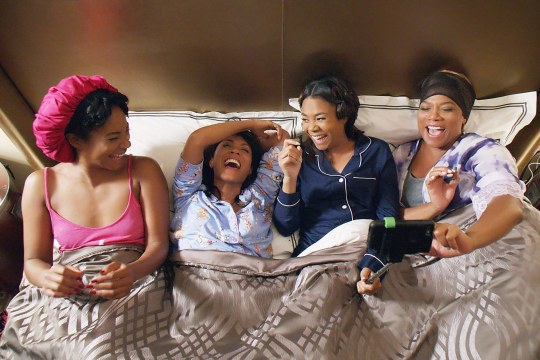
Perhaps it’s the Bridesmaids or The Hangover of 2017, Girls Trip is a fun, buddy comedy about a group of women who try to rekindle their friendship during a trip to New Orleans. Queen Latifah and Jada Pinkett Smith are always reliable and Regina Hall is an underrated lead, but it’s breakout star Tiffany Haddish that gets the biggest laughs.
24. All The Money in the World

All The Money in the World is a good film on its own, but what makes it historic is what went on behind the scenes. Ridley Scott pulled off the impossible by replacing its disgraced star Kevin Spacey with Christopher Plummer with only roughly a month ahead of its original Christmas release. The film is based on the events of the 1973 kidnapping of John Paul Getty’s grandson. All The Money is a highwire thriller, but it’s Plummer’s brilliant, cold-hearted performance that steals the show.
23. Okja

Korean director Bong Joon-ho behind such films as The Host and Snowpiercer debuted this gem. Okja follows a girl’s battle to protect her “superpig” from a juggernaut company that plans on turning her pet into food. This action adventure was easily one of Netflix’s strongest original films to date. The stellar cast includes Tilda Swinton, Paul Dano, Jake Gyllenhaal, Steven Yeun, Lilly Collins, and newcomer Seo-hyeon Ahn.
22. Battle of the Sexes

Emma Stone and Steve Carrell face off as Billie Jean King and Bobby Riggs in the most historic tennis match in history. Battle of the Sexes is a fun, empowering, nostalgic sports dramedy from Little Miss Sunshine’s Jonathan Dayton and Valerie Faris.
21. Stronger
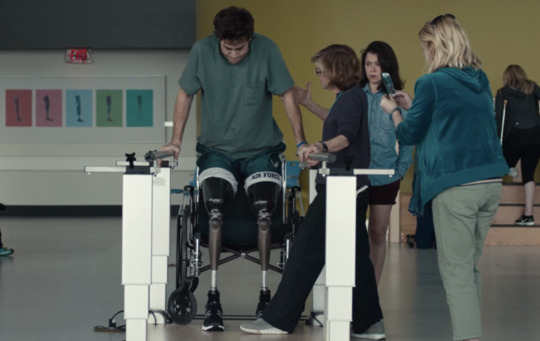
Based on the incredible true story, Stronger follows Jeff Bauman and his struggle for normalcy after surviving the Boston Marathon bombing. Time and time again, Jake Gyllenhaal proves to be one of Hollywood’s most under-celebrated actors today as he arguably gives the most challenging performance of his career. Tatiana Maslany (Orphan Black) also deserves praise for her raw, emotional supporting role. Stronger is a powerful, moving biopic that reminds us that there’s always hope even in the darkest moments.
20. Split

After releasing numerous duds, it appears that M. Night Shyamalan is finally making a comeback. Split kicked off 2017 with a wild psychological thriller surrounding the kidnapping of three young women who’ve been imprisoned by a man with multiple personality disorder. James McAvoy gives a memorable performance as he channels well over a dozen personalities.
19. Wonder Woman
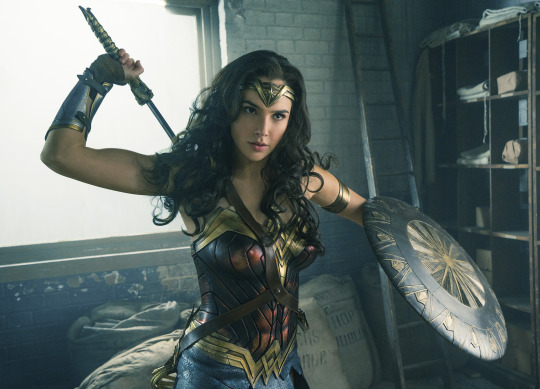
Wonder Woman broke the glass ceiling on many fronts: one being the first female-lead superhero blockbuster and such a blockbuster was directed by a woman. Gal Gadot made her big-screen debut as the Amazon princess in Batman v Superman: Dawn of Justice, but she absolutely nails it in her first solo flick. Many have considered this film to be the strongest film in the DC Cinematic Universe yet.
18. Alien: Covenant

Ridley Scott certainly kept himself busy this year. In the latest chapter of this deep-space horror franchise, a colony ship makes a fatal detour on a planet filled with our favorite aliens. Accompanied by an all-star cast, Michael Fassbender is on double duty with two fantastic performances. While Prometheus settled the groundwork, Alien: Covenant returned to its heart-pounding roots that made these films such a big success.
17. It

Very rarely do remakes exceed its predecessors, but the 2017 remake of Stephen King’s It really deserves praising. Bill Skarsgård managed to make Pennywise his own with his terrifying interpretation of the murderous clown. That being said, the film heavily relies on the tremendous cast of young actors including Jaeden Lieberher, Sophia Lillis, Finn Wolfhard, Jack Dylan Grazer, Wyatt Oleff, Chosen Jacobs, and Jeremy Ray Taylor. Filled with good scares and disturbing imagery, It will have a new generation afraid of clowns.
16. Darkest Hour
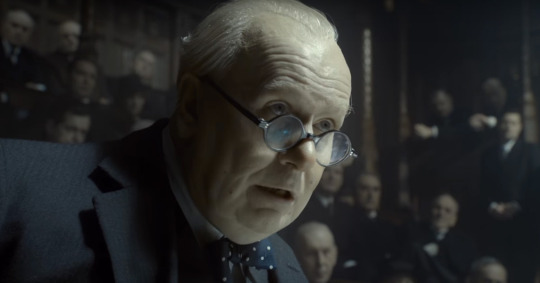
Gary Oldman gives a transformative, Oscar-worthy performance as British Prime Minister Winston Churchill in Darkest Hour. The film takes place during the chaotic transition period the United Kingdom face in the midst of WWII and gives a glimpse of Churchill’s bumpy start to his successful era of leadership. Darkest Hour is a captivating drama with sprinkled humor throughout.
15. Get Out

Part horror, part thriller, part social satire, Get Out marks the directorial debut of funnyman Jordan Peele. An interracial couple is put to the test when the black boyfriend visits the white girlfriend’s family, but once he gets there, he’ll learn that her family may have something sinister planned for him. While it’s sort of hard to explain it, Get Out is a unique, thought-provoking, movie-going experience unlike any other in 2017 that’s carried by a strong cast and an intriguing plot.
14. The Wedding Plan

Chances are you haven’t heard of The Wedding Plan, but it’s one of the most relatable films of the year. This Israeli romantic comedy follows an anxious bride-to-be who decides to keep her wedding date after her fiancé dumped her just weeks before and literally relies on faith in order to find a groom before she walks down the aisle. Yes, the plot’s that zany, but Noa Koler’s heartwarming and heartbreaking performance truly carries the film.
13. Dunkirk
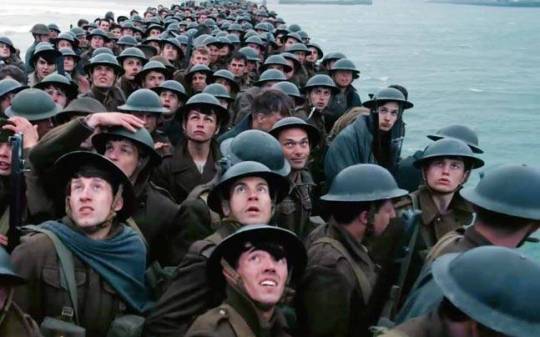
It’s been three long years, but Christopher Nolan returned with an immersive war flick Dunkirk, which depicts the underdog WWII rescue effort of the British military that was surrounded by German troops. While there isn’t exactly a straight-forward plot, the incredible cinematography, editing, and sound design keep audiences on the edge of their seats.
12. War of the Planet of the Apes

An epic conclusion to one of the strongest trilogies in recent memory, War of the Planet of the Apes was a rare reboot that actually exceeded its predecessors. For three films, Andy Serkis brilliantly humanizes the lead ape Caesar as the climax escalates the brutal battle between human and ape.
11. The Shape of Water
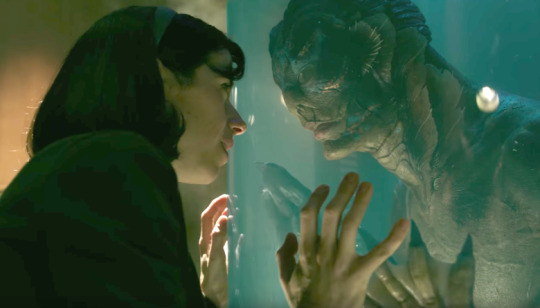
If Beauty and the Beast and Creature From The Black Lagoon had a beautifully weird baby, it would be Guillermo del Toro’s latest film The Shape of Water. The story surrounds a mute janitor who forms a relationship with a creature trapped in the laboratory she works at and her personal mission to help him escape. She doesn’t even speak a word, yet Sally Hawkins gives one of the best performances of the year and she’s joined by a spectacular supporting cast including Octavia Spencer, Michael Shannon, Richard Jenkins, and Michael Stuhlberg. Visually stunning and emotionally enthralling, this is del Toro’s best film since Pan’s Labyrith.
10. Call Me By Your Name

An emotionally complex film, Call Me By Your Name tells the story of a romance that blossoms between a 17-year-old boy and his father’s 24-year-old research assistant. In the wake of the #MeToo movement, such an inappropriate relationship would/should be frowned upon, but as viewers, you sympathize with Elio and Oliver not just because they’re likable characters but for the powerful performances that came with them, particularly from breakout star Timothée Chalamet.
9. The Killing of a Sacred Deer

The closest thing to an Alfred Hitchcock film in 2017, The Killing of a Sacred Deer is a suspenseful, psychological thriller that virtually no one saw. The film follows teenager who gets brutal revenge after a doctor failed to save his father’s life. Newcomer Barry Keoghan, who you’ve might have seen in Dunkirk, gives a unsettling, outstanding performance. Between this and his last film The Lobster, writer/director Yorgos Lanthimos is proving to be a filmmaker Hollywood should watch out for.
8. The Disaster Artist

If you haven’t seen The Room, it’s a 2003 film that has earned a cult following because it’s so incredibly bad, it became unintentionally hysterical. The Disaster Artist is about the making of that film with James Franco starring, producing and directing the film. Franco manages to earn big laughs and also give a transformative performance as the infamous Tommy Wiseau. With tons of A-list cameos and a brutal glimpse of the film industry, The Disaster Artist made the making of a painfully bad film painfully funny.
7. The LEGO Batman Movie

Not only was this a great animated movie, it was also a great Batman movie. The LEGO Batman Movie allows its self-awareness to drive the narrative that examines Batman’s relationship on a psychological level. Filled with tons of fun Easter eggs and references to previous Batman films, this LEGO movie will leave you nostalgic and laughing til it hurts.
6. Lady Bird
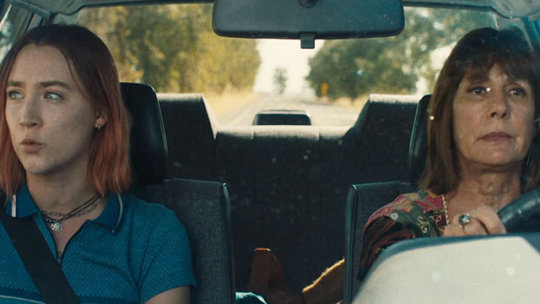
Actress Greta Gerwig makes a strong directorial debut with this down-to-earth coming of age comedy about a Sacramento teen transitioning into adulthood. In film after film, Soirse Ronan shows that she’s one of the best actresses in the millennial generation and Laurie Metcalf, who may win the Oscar playing her heartfelt but judgmental mother, shows that she’s one of the most under-celebrated actresses of our time.
5. The Big Sick

The greatest romantic comedy since Silver Linings Playbook, The Big Sick is a rare film because it feels authentic and real... and that’s probably due to the fact that it’s based on the stranger-than-fiction true story behind Kumail Nanjiani and Emily Gordon’s relationship. Nanjiani essentially stars as himself (which he does a terrific job) and has great chemistry with his co-star Zoe Kazan. Ray Romano and Holly Hunter give hilarious, heartwarming performances as the parents who meet Nanjiani as their daughter is in a coma. From the culture clashes, the comedy industry, to the modern era of dating, The Big Sick feels more relevant than ever and can resonate with any audience.
4. Coco
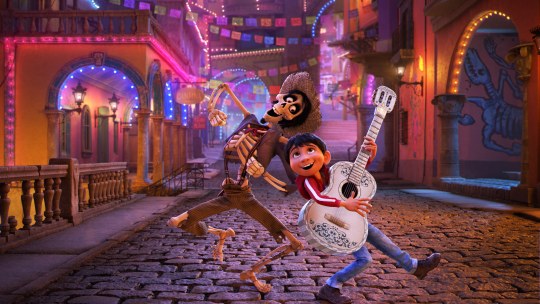
Disney/Pixar has a gift of continuously melting people’s hearts. And they do so again with their beautifully-animated latest, Coco. Miguel is an aspiring musician in a family that has banned music after his great grandfather abandoned them for pursue stardom. And after being transported into the Land of the Dead, Miguel must track down his ancestor in order to return home. The importance of art is obviously a theme, but the heart of the film is about family, pursuing our dreams, and the significance of leaving a legacy. Coco is rich with a cast of lovable characters, great music, and a satisfying ending that may leave you in tears.
3. Three Billboards Outside Ebbing, Missouri
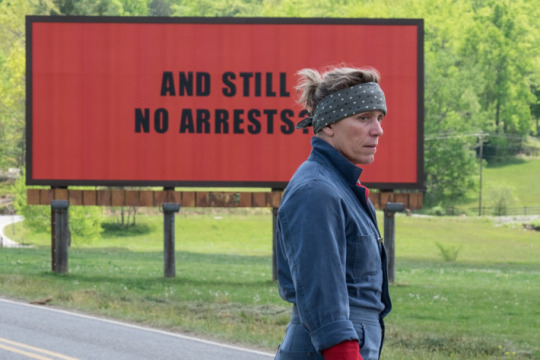
Three Billboards Outside Ebbing, Missouri may be a mouthful, but it’s also masterful work from writer/director Martin McDonagh. Frances McDormand gives an Oscar-bound performance as grieving, no-nonsense mother determined to pressure the police to solve the murder of her daughter. She is accompanied by a strong ensemble cast which include strong supporting performances from Sam Rockwell and Woody Harrelson. Three Billboards is the only film this year that will make you laugh, cringe, and anxious all at once. It’s the closest thing to Fargo since Fargo... and the Fargo TV series.
2. Baby Driver

Edgar Wright, the mastermind behind Shaun of the Dead, Hot Fuzz, and Scott Pilgrim vs. The World, finally found commercial success with Baby Driver, a terrifically-edited heist film with the greatest film soundtrack in recent memory. Aside from the uncomfortable fact this will go down as Kevin Spacey’s last great film, Ansel Elgort proves he’s got the chops for a leading role. With lots of well-choreographed action sequences and even some laugh, Baby Driver is absolute fun and is why we go to the movies.
1. I, Tonya
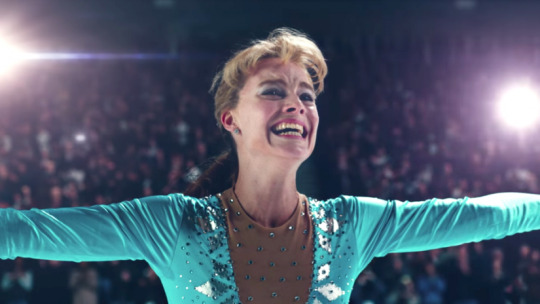
Who would have thought that it would take a dark comedy to make Tonya Harding look sympathetic? I, Tonya is a unique, Goodfellas-like biopic that gives multiple, not entirely reliable perspectives surrounding the infamous attack of Nancy Kerrigan. Margot Robbie offers a layered, grounded depiction of someone who was painted as a cultural villain. Allison Janney also knocks it out of the park as her cruel yet hilarious mother. The works of director Craig Gillespie and screenwriter Steven Rogers have spanned decades, but their collaboration here is the best of their careers. Combined with great editing and an awesome soundtrack, I, Tonya is a rare film in 2017 that isn’t just another remake, sequel, or ripoff; it skates on its own.
#Margot Robbie#Wonder Woman#Gal Gadot#Call Me By Your Name#Baby Driver#Girls Trip#Tiffany Haddish#Jake Gyllenhaal#Coco#the lego batman movie#The Big Sick#Lady Bird#The Disaster Artist#James Franco#the killing of a sacred deer#Dunkirk#The Shape of Water#I Tonya#Get Out#It#Okja#Emma Stone#James McAvoy#Steve Carell#Michael Fassbender#Saoirse Ronan#Batman#Guillermo Del Toro
5K notes
·
View notes
Text
The Shape of Water review

Last year saw the release of an utter travesty of filmmaking: Beauty and the Beast. It is easily one of the worst films I have ever seen in my life; it lacked everything that made the original Disney film great. The side characters were all dull, Gaston was a fucking bore, the Beast was a bland CGI furry, and Emma Watson as Belle gave the most lifeless, miserable, atrocious performance of her entire career. And it sucks, because we DESERVE a good Beauty and the Beast film, we deserve a love story where the monster is more human than the human suitor, with sympathetic characters and an interesting antagonist… and visionary genius and absolute madman Guillermo del Toro gave us just that, with the Shape of Water, a film that is easily one of the greatest love stories ever told.
This film has been memed to Hell and back, what with the basic premise – a woman bones a fishman – being particularly amusing to the internet for obvious reasons. But to the shock of absolutely no one, the film is so much deeper than the sex – in fact, you don’t even get to see the sex, and I’ll get into why later in the review. For now, let’s start with a plot summary:
It’s the early 60s, and the Cold War is at its peak. Elisa Esposito is a mute janitor working at a government lab with her black BFF Zelda. One day, she discovers a creature being held at the government lab that the superiors are calling “The Asset.” An amphibious fishman from the Amazon, she finds herself intrigued by this being and soon finds herself befriending it. Not long after, the government plans to vivisect the creature, but Elisa ain’t having any of that shit, and so with her old man artist friend Giles plots to get the Asset free. But all this is easier said than done… can they free the Asset, or is the man running the show, Richard Strickland, going to catch on?
I’m gonna be doing a lot of comparing and contrasting to Beauty and the Beast, because these films do follow the same sort of basic structure and have a lot of the same archetypical characters and themes, such as “the real monsters are prejudiced humans” and “strong female who feels alienated from her society.” The latter is particularly relevant here, and not just for Elisa; del Toro has stated that the movie is meant to reflect on how he feels as an immigrant in America, and the feelings of isolation and being an outsider are major parts for every single one of the film’s sympathetic characters. Elisa is a mute, as is the Asset (though the Asset is also, you know, an Amazonian fishman); Zelda is a black woman in the early 60s; Giles is an elderly gay man; and Dimitri is a communist scientist undercover at the government facility. Unlike in Beauty and the Beast, which has such a dull and unappealing supporting cast (save for Lefou), this movie’s supporting cast all have deep stories to them that are intricately woven into their characterization and reflect some of the core themes of the film. It really is impressive when a character who is a proud communist is sympathetic, likable, and heroic; Dimitri is to this movie what Stronheim is to Battle Tendency, to put it in the most bizarre way possible. Every single actor does a fantastic job, and it’s pretty easy to believe any of these characters could be a person’s favorite of the film.
But what is a Beauty and the Beast story without a Gaston? I hated the Gaston in the Disney remake, as he was a bland, unappealing, and uncharismatic waste of a good actor. None of that is a problem here; Michael Shannon (who you may know best as General Zod from Man of Steel) is playing Strickland, and it is just as fantastic a performance as the rest of the cast. He’s arrogant, pompous, and honestly kind of disgusting – even before his fingers start rotting he pisses all over the bathroom floor because he doesn’t hold his dick when he pees, and then he doesn’t wash his hands, oh and he’s also racist, prejudiced, and harasses Elisa – but he’s also the poster child for idyllic 60s life. He has a home with a wife, two kids, he buys himself a fancy new car… unlike our heroes, Strickland’s life is picture perfect, like the families in old timey ads. This is a stark contrast to the less perfect lives our heroes lead, but it is an important part of the film, as it showcases that true humanity doesn’t simply come from fitting the mold of the what people think humanity is, it is who we are when no one is looking, who we are when we are in a bad spot and help others, who we are when we are truly selfless. Strickland is not selfless; in fact, he is an utter bastard. And yet for all the world he seems nothing but your normal perfect white 60s husband, while the heroes are a ragtag assembly of the sort of people who would be most shunned in that time period.
Of course, one of the most essential parts of this sort of story is the leads themselves; Beauty and the Beast had a lifeless CGI doll that drifted into the uncanny valley every other shot as the leading man, and Emma Watson giving one of the blandest, most lifeless performances this side of Jennifer Lawrence in an X-Men movie as our leading lady. Needless to say, they fucking blew. But here, HERE we have Elisa and the Asset, two very unconventional leads. You’d think a character being mute would be a huge hindrance, but as movies like The Little Mermaid show, you can be strong and interesting even without a voice, and Elisa is definitely both of those things. She is so expressive even when not using her sign language, you can always get a really good feel for what’s on her mind at any time, and actress Sally Hawkins just really nails it, especially in a ll her interactions with the Asset. And the Asset himself, played by Doug Jones, is perhaps the greatest leading man in romantic history. Leave it to a master like Doug Jones to truly sell you that this massive walking fish creature is the perfect romantic lead. Frankly, I’m a bit miffed he didn’t get an Oscar nomination for this performance, because despite not speaking and despite being an amphibious beast, he really delivers a compelling performance, above and beyond what you’d expect. And as you would expect of any del Toro monster, the Asset is gorgeously designed and really appealing to look at despite being a big fish creature. And guess what? Unlike the Beast, the Asset utilizes a lot of practical effects and isn’t just a nonstop CGI dummy the whole film!
It’s interesting to note that the actual romance and the infamous fishman sex do not occur earlier in the film; it happens more towards the midway/final third of the film. But this is a good thing, because it does give us proper buildup and leads to the attraction feeling natural rather than forced and rushed. You see the two build a connection with each other, these two outsiders no one else truly understands connecting with each other because, in their eyes, the other is not the flawed, broken being that others see them as. To each other, they are perfect. And this leads me into talking about the sex scene, and why we don’t see it: we don’t see it, because doing so would turn something beautiful into nothing but cheap titillation. Let me explain further: the only sex we see in the film is the awkward, bland, missionary position sex between Strickland and his shiny, idyllic housewife. During sex he shoves his bleeding fingers in his wife’s mouth as she moans in pleasure so he can shut her up and imagine Elisa. The sex is awkward, uncomfortable, and almost disturbing to watch. There’s no passion, no love, there’s nothing there. It’s basically a million other sex scenes in a million other movies. The love between Elisa and the Asset, on the other hand, is beautiful, passionate, intimate… we shouldn’t be allowed to see it. We shouldn’t reduce the love of these two, this beautiful romance, down to some sleazy masturbatory visual extravaganza. What they had together is something truly special, and I believe it was truly the right thing to leave their lovemaking to the imagination; it is not our place to intrude on and gawk at true love being consummated.
This is the Beauty and the Beast movie we all deserve. It’s The Creature from the Black Lagoon movie we deserve. This is easily del Toro’s best and strongest film, better than Hellboy II, better than Pan’s Labyrinth, better than Pacific Rim… and make no mistake, saying that is REALLY SAYING SOMETHING, as all those films are absolutely fantastic. I absolutely loved this movie, it really was everything I could have possibly hoped it would be and more, and there is absolutely no way I could live with myself if I didn’t recommend this wholeheartedly to everyone. Honestly, even if it’s not my favorite film of 2017, I would have put this as the #1 best movie of last year regardless, because from an objective standpoint, it IS the best movie of 2017. If you’re looking for a weirder sort of romance film, if you’re looking for a movie where the monster finds love, if you’re looking for a 2017 Beauty and the Beast movie that doesn’t absolutely suck ass, this right here is the movie for you.
#Review#movie review#the shape of water#guillermo del toro#the asset#doug jones#Sally hawkins#sci-fi#romance#beauty and the beast
82 notes
·
View notes
Text
Which Edgar Allan Poe Stories Will Netflix’s The Fall of the House of Usher Adapt?
https://ift.tt/3Afbh4B
It all made too much sense not to happen. After borrowing Shirley Jackson’s source material for 2018 series adaptation The Haunting of Hill House and Henry James’s (again: we must insist you call him “Hank Jim”) for 2020’s The Haunting of Bly Manor, there was only one classic horror author for filmmaker Mike Flanagan to adapt next.
Ladies and gentlemen we present to you: America’s spookiest uncle. The mustachioed, cousin-loving freak himself. Edgar. Allan. Freaking. Poe.
Netflix announced today that Flanagan and producing partner Trevor Macy will be shepherding a new limited series called The Fall of the House of Usher, based on Poe’s titular short story along with a handful of his other works. This is the fifth horror series that Flanagan and Macy have brought to Netflix after Hill House, Bly Manor, Midnight Mass, and the upcoming The Midnight Club. It will feature eight episodes, four of which will be directed by Flanagan.
This is one of the most natural partnerships between adapter and source material in a long time. Flanagan is the hottest name in horror right now thanks to his Netflix television work and major Stephen King film adaptations like Gerald’s Game and Doctor Sleep. Meanwhile, 19th century writer Poe is quite simply the American horror story GOAT.
Read more
TV
Why Midnight Mass is Mike Flanagan’s Most Personal Work
By Alec Bojalad
Movies
Scott Cooper and Guillermo del Toro Want to Make Edgar Allan Poe Movie
By David Crow
Just about every bit of horror content that has been produced on this continent since the early 1800s owes its existence in some part to Poe. The Boston-born, Baltimore-dead writer produced dozens of classics like “The Raven”, “The Tell-Tale Heart”, and more. He also married his cousin and died penniless in the streets like any real Goth should.
Though Flanagan’s The Fall of the House of Usher will adapt one Poe work in particular, Netflix notes that it will cover several others. Here are some other Poe pieces that the limited series might seek to adapt.
The Fall of the House of Usher
Well, this one’s a layup. Obviously the series called The Fall of the House of Usher will borror liberally from Poe’s titular short story. But what exactly will that entail? First published in 1839, “The Fall of the House of Usher” features just about everything that makes a Poe story distinctly Poe: insanity, family, isolation, and of course: violence.
The story features an unnamed narrator visiting his old friend Roderick Usher in his mansion after receiving a letter complaining of illness. Once the narrator arrives, he discovers that Roderick and his sister Madeline are in very rough shape. When Madeline suddenly perishes the real horror begins.
It’s a good bet that Flanagan’s The Fall of the House of Usher will center on three characters approximating the narrator, Roderick, and Madeline. While his two previous “Haunting” efforts borrowed their titles from actual homes, this title refers more to House Usher in the familial sense (i.e. House Lannister and House Stark). Make of that what you will.
It’s also worth noting that The Fall of the House of Usher was previously adapted into a classic 1960 Roger Corman horror movie of the same name starring Vincent Price. Expect that to be a major inspiration for Flanagan.
The Masque of the Red Death
If ever there were a time for this Poe short story to shine…
“The Masque of the Red Death” was published in 1842 and is set at a lavish masquerade thrown by Prince Prospero. Though the country is gripped by a dangerous plague known as “The Red Death”, that is no excuse to stop partying. Things get weird, however, when a party-goer turns up wearing a full-on Red Death costume. This costume would be in extremely poor taste…if it weren’t being worn by death itself.
“The Masque of the Red Death” has the most metal closing line in all of the Poe canon: “And Darkness and Decay and the Red Death held illimitable dominion over all.” It’s unclear how Flanagan would incorporate this into the series, but he kind of has to, right?
William Wilson
“William Wilson” is a relatively minor Poe work but we suspect it’s use of doppelgangers would be highly appealing to the team that brought two Henry Thomases to The Haunting of Bly Manor. This tale is all about its title character attending school and meeting another boy exactly like him. And we mean exactly like him: same name, appearance, birthday, everything.
The two William Wilsons cross paths many other times throughout their lives and it all culminates in a classic bit of Poe bloodiness. At the very least, The Fall of the House of Usher seems likely to include a character named William Wilson as a wink.
The Pit and the Pendulum
Many of Poe’s works include a certain level of supernatural intervention. “The Pit and the Pendulum”, however, does not. This makes it unusual among Poe’s efforts. It also makes it one of his best.
This story takes place during the Spanish Inquistion and is an ahistorical account of one man’s imprisonment and torture inlvoving…you guessed it: a pit and a pendulum. There isn’t much of a cohesive narrative here on its own but Flangan’s series could utilize this as a flashback much as it did with Henry James’s “The Romance of Certain Old Clothes” for the flashback episode of The Haunting of Bly Manor.
cnx.cmd.push(function() { cnx({ playerId: "106e33c0-3911-473c-b599-b1426db57530", }).render("0270c398a82f44f49c23c16122516796"); });
The Cask of Amontillado
An interesting aspect of much of Poe’s short stories is that they come from the perspective of murderers. “The Tell-Tale Heart” is the most infamous example but his 1846 work “The Cask of Amontillado” might be his best.
This tale follows a man named Montresor who invites a fellow nobleman named Fortunado to check out his rare vintage wine collection. Montresor then chains Fortunado and leaves him to die on a wine cellar. Why? Well, that’s not entirely clear. Maybe it was for a petty offense years ago or perhaps it’s just because killing is fun. “The Cask of Amontillado” is full of interesting questions that The Fall of the House of Usher would be all the richer for asking.
The post Which Edgar Allan Poe Stories Will Netflix’s The Fall of the House of Usher Adapt? appeared first on Den of Geek.
from Den of Geek https://ift.tt/3FnHgDn
0 notes
Text
Top 10 Best Films of 2017 - End of Year List
I did a mid-year ‘best of’ list, so it was only fitting that I returned to the format at the end of the year to run down my top 10 favourite films of the year. Only three films from my mid-year list remain here, which is a testament to what an incredible year it has been for film. As far as I’m concerned, 2017 has been a real banner year for cinema and it has seen the release of several all-time greats that I look forward to enjoying for many years to come.
Since I’m based in the UK there will be several notable omissions here (I still eagerly await films like Phantom Thread, I, Tonya and The Post), purely by dint of the fact that they have yet to be released in this country. Do look out for them in my forthcoming most-anticipated of 2018 list!
Honourable mentions: Custody, Brimstone, The Disaster Artist, Professor Marston & the Wonder Women, Call Me By Your Name
1. Star Wars: The Last Jedi, dir. Rian Johnson

While the placement of this film on my list may be resoundingly predictable (check out the total lack of bias signalled by my username!), the thrilling thing is that the film itself is anything but. The Last Jedi shatters the Star Wars mould to entertain new forms of storytelling and question long-held assumptions. It’s a shockingly meta story in how it questions the conventions of Star Wars - particularly those concerning lineage and its implications - but it is never meta in an ironic sense. There are no wink, wink moments, and while the past is investigated and questioned it is never mocked. Instead of descending into irreverence, The Last Jedi is meta in a way that feels absolutely necessary and justified if Star Wars is to remain fresh and vital as it moves forward. Bloodline and history do not have to dictate destiny in this new version of Star Wars - the heroes are those who understand this, and the villains are the ones who fail to grasp the same lesson. It’s a beautiful and intellectually rigorous movie, and I’m thrilled by how it elevates and re-contextualises the stories that came before it while pushing the characters and their relationships forward. I have no idea of where Episode IX will take this story, and that is incredibly exciting to me. Bring it on.
2. Blade Runner 2049, dir. Denis Villeneuve

There are a million and one reasons why this movie shouldn’t have worked, but Villeneueve proved his genius by making a sublime sci-fi picture that actually surpasses its predecessor. I have always admired the original Blade Runner more than I’ve enjoyed it, and that’s because I have always found it emotionally distant. Deckard struck me as a mumbling arse and his romance with Rachael always felt obligatory, not organic. The genius of Blade Runner 2049 lies in how it made me care - it made me care about the love between Deckard and Rachael (which was something of a miracle in itself), and it made me care about the love between K and his holographic girlfriend Joi. With these emotional hooks in place, everything worked as a thrilling symphony. The cinematography is easily the best of any film in 2017 (sorry, Dunkirk - I still love you) and this film has an astonishing number of scenes that still linger in my mind after many months - the very modern threesome, the shootout in the gaudy pleasure palace, the fight in the rain, the father seeing his child for the first time. It’s a breathtaking film and I couldn’t be more excited to see what Villeneuve does next.
3. Dunkirk, dir. Christopher Nolan

Dunkirk is such a striking and effective piece of cinema that it actually made me overcome my innate bias against war movies (I blame too many tedious Sunday afternoons wasted on mandatory viewings of The Great Escape at my grandparents’ house). With Dunkirk, Nolan has probably made his most accomplished and sophisticated movie - it starts off unbearably tense and doesn’t release its grip on your pulse until the final scene, when its hero finally drops off to the blessed peace of sleep. Nolan employs a tricksy converging structure with multiple plot strands to ramp up the tension and provide different perspectives on the evacuation, masterfully playing them off each other to assemble the big picture. While criticised by some for its apparent lack of character, I can’t really agree with that assessment - Dunkirk is probably the most powerfully humanistic war film I’ve ever seen, and by stripping its characters down to their rawest selves it reveals some uncomfortable yet powerful truths about all of us. The characters are somewhat distant from us - we never hear them pine for lovers or miss their mothers - but the removal of these storytelling shorthands leaves us with soldiers who behave exactly as you would expect frightened, stranded children to. And there’s something terrifyingly poignant about that.
4. mother!, dir. Darren Aronofsky
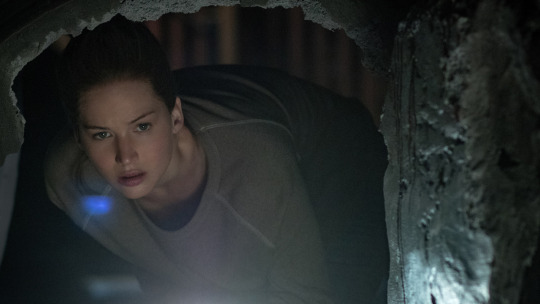
mother! is the work of a madman with no fucks to give, and it is what I choose to refer to as ‘peak Aronofsky’. He made what is clearly an allegory, and while he had his own intentions with said allegory (which he has been very loud about declaring) the film is so cleverly constructed that it can simultaneously be about the entire history of the world and the plight of the tortured artist’s muse - either reading is perfectly correct and supported by the text. mother! is a piece of art that has provoked a lively and frequently heated debate, and while it needs to be read as an allegory to make any kind of sense as a narrative I also don’t want to undersell this movie as an emotional experience. If you go into mother! willing to be challenged and content to be swept up in a bold artistic vision, it has the potential to be a really absorbing and engrossing film - it is anchored by Jennifer Lawrence’s remarkably brave and unrestrained performance. She is not playing a grounded character, but her performance is palpably real and frequently painful to witness - she portrays the whole spectrum of emotions, from mild bemusement to shrieking horror, and the whole film soars on the strength of her efforts. This is a uniquely strength and esoteric film, and I am incredibly happy that it exists.
5. Get Out, dir. Jordan Peele

This film really knocked me for six, to such an extent that I simply had to see it twice in the cinema. It got even better upon a re-watch, when I was able to watch it with full knowledge of the characters’ underlying motives and the things to come. It’s a terrifying concept (the racism of an all-white suburb is taken to a horrifying extreme) executed with incredible panache, and you feel every emotion that Chris goes through thanks to Daniel Kaluuya’s excellent performance. Get Out also represents one of the most brilliantly communal experiences I’ve ever had at the cinema - I won’t spoil it, but let’s just say that the audience erupted into spontaneous applause at a key moment in the climax. Simply fantastic.
6. The Handmaiden, dir. Park Chan-wook
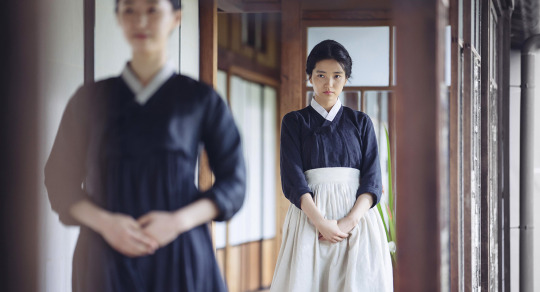
This film is exquisite - it’s first and foremost a beautiful boundary-smashing love story, and an absolutely marvellous tale of female defiance. It transplants Sarah Waters’ novel Fingersmith to 1930s Korea, and the story is effortlessly adapted to become intrinsically interwoven with its new setting. Sookee is a talented pickpocket plucked from a thieves den and sent as a handmaiden to trick a rich heiress into falling for a conman. To say any more would spoil the twists, but this film is just a masterwork of suspense, keeping you guessing throughout a series of interlocking pieces that take their time to reveal their secrets. I’ve seen the theatrical cut and the extended version, and they’re both great - you’re in for a treat with either.
7. The Florida Project, dir. Sean Baker

This is one of the best screen depictions of childhood I’ve ever seen. Our hero here is Moonee, a smart-tongued and cheeky six-year-old. Moonee lives in a motel room with her abrasive but loving mother, but since she’s a child she doesn’t mope or lament her poverty - she takes her surroundings for granted and makes the tacky shops and hotels that form her world her very own theme park. The Florida Project is firmly committed to adopting a child’s eye perspective, and while it can feel a bit meandering to begin with it gradually accumulates pace and purpose, building to an utterly heartbreaking and unforgettable climax. The performances here are extraordinary, and Brooklynn Prince is so palpably real as Moonee that she’ll own your heart by the end of the movie (having squeezed it to bursting point on several occasions).
8. The Shape of Water, dir. Guillermo del Toro
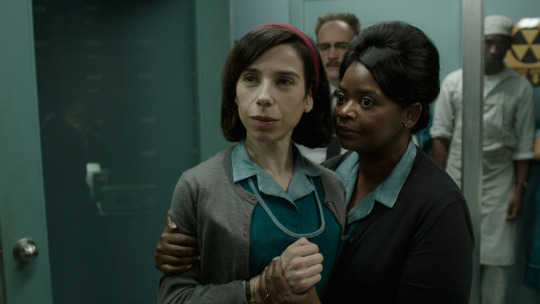
I’ve long been a huge del Toro cheerleader, and this movie is perhaps best described as ‘peak del Toro’ - it has the mannered, detail-oriented set design, the charming quirkiness, the subverted horror, and the woozily strange romance that he has employed again and again in his films. This story, however, is unusual for del Toro in that it is ultimately optimistic and hopeful - it’s the daddy of all supernatural romances in that it is a full-blown love story between a mute human woman and a fishman, and it is characterised by total commitment and self-belief. Think Creature from the Black Lagoon done with the creature as the romantic hero. The Shape of Water has a certain playfulness that means it never feels ponderous or silly, but it affords its characters real respect and dignity and makes you care for them deeply. This movie makes me excited to see where genre filmmaking can go next (hint: I hope it only gets weirder).
9. Thelma, dir. Joachim Trier

Who knew something like this could come out of Norway? This was probably my biggest pleasant surprise of 2017 in terms of film - I went in with no expectations at all, and came out wowed. This is an intensely strange and effective supernatural horror that follows a girl with strange repressed powers that manifest whenever she experiences desire. It could be a hackneyed or exploitative premise in the hands of a lesser filmmaker, but Trier shows a deft hand and a remarkable talent for building tension and creating a sense of heightened reality. There is one scene set to ‘Mountaineers’ by Susanne Sundfor that is one of the most transporting experiences I have ever had in the cinema - the combination of the ethereal music and the mounting suspense makes for real film magic. This was a great reminder of how important it is to take chances and try out films outside your comfort zone.
10. Jackie, dir. Pablo Larrain

This is a film that soars on the strength of Natalie Portman’s incredible performance, which is complemented by Mica Levi’s haunting score. Portman’s performance is painfully vivid, with her agony and wretchedness coming through so intensely that it’s often uncomfortable to watch. Jackie is probably the best portrait of grief I’ve ever seen, and it sucks you into a famous historic event by providing an incredibly intimate perspective on it. This is great cinema, but be prepared for suffering.
#best of the year#film#cinema#the last jedi#blade runner 2049#dunkirk#mother!#get out#the handmaiden#the florida project#the shape of water#thelma#jackie
207 notes
·
View notes
Photo

Best Films of 2017 by: Will Whalen
Hello everyone! I know, we’re already a month into 2018 but some films that were 2017 releases didn’t come out near me till 2018 and I just had to wait and see them. However, it didn’t change much because (for the most part) my top films list is nearly the same as it was when I made it in December. So, here it is! This was a terrific year for film but these are my absolute favorites of 2017.
First, I have a few honorable mentions: Molly’s Game, Alien: Covenant, John Wick 2, Get Out, My Life as a Zucchini, Guardians of the Galaxy vol. 2, Call Me By Your Name, and All the Money in the World.
So, here we go!
15. The Disaster Artist
I was really surprised by The Disaster Artist because I was really excited for it because of The Room and I was expecting it to be a comedy about how The Room was made. And if you’ve ever seen The Room, anyone would be excited for that reason. However, what I got was a surprisingly super touching film about friendship and achieving your dreams no matter what the cost is or no matter how many times someone says you can’t.
14. Dunkirk
Dunkirk was a war film from the incredible mastermind Christopher Nolan that wasn’t a typical war film. It wasn’t some character drama on top of being a war film but instead a more accurate look at war. It was about survival and this horrible situation that these brave men were stuck in and basically all had to fend for themselves. I only got to see it once and I was lucky enough to see it in 70mm film but I can’t wait to revisit it.
13. Good Time
Good Time was actually a great time (bad pun intended) and was one of the most stressful, thrilling and non stop downward spirals of a film I have seen in recent memory. Robert Pattinson also gave his best performance and really should’ve been nominated. It was also directed excellently by the Safdie Brothers who took risks. They did things in this that most filmmakers would never dare to do. If you’re easily stressed, maybe stay away from this movie. But, its a good time...
12. It
You’ll float too… when you see It. It was one of the best horror films I’ve seen in quite a long time and definitely one of the funniest movies of last year. We finally got a It film and it was so wonderful. Andy Muschietti did a great job helming this work and the phenomenal cast from all the talented young actors involved make this movie one of a kind and one of the best Stephen King adaptations.
11. A Ghost Story
A Ghost Story was such a special movie. This film explores death, grief, and the afterlife in one of the most beautiful films of last year. Casey Affleck also gave one of the best performances of his career and he was under a sheet the whole time. His performance spoke volumes and I would’ve liked to have seen him get some recognition. This film floored me and if you haven’t seen it, do check it out. It’s not a horror movie but it will haunt you.
10. Thor: Ragnarok
This was one one of Marvel’s best to date. Takai Waititi takes the Thor story into a new direction and made one of the funniest and one of the most all out entertaining films of the entire year. Just on a pure fun and comedic level, this was one of the best and definitely one of the most fun films of last year. Also, Waititi gave us Korg and I don’t think we can thank him enough for that.
9. T2: Trainspotting
Aye ya doss cunt! This is a sequel to one of my top favorite films of all time, Trainspotting. Trainspotting came out in 1996 and now here we are, 20 years later with a sequel. This could’ve easily not been good but with Danny Boyle once again behind the camera, our favorite skagboys back and with a wonderful script, this was a fantastic sequel and a beautiful one too. Plus, it’s Trainspotting! Plus, there’s a great soundtrack once again.
8. Baby Driver
B-A-B-Y Baby! Baby Driver was an all out blast. It’s a fast paced, thrilling, exciting and wonderful film that has one of the best soundtracks to any film that has come out in a long time. All this is due to the amazing Edgar Wright who has made yet another great film with Baby Driver.
7. Logan
Logan is the wolverine film we’ve all dreamed about. An R rated Wolverine film is exactly what the world of superhero films needed. In Hugh Jackman’s supposed final performance as the Wolverine, we got one of the all time best superhero films. It was directed gorgeously and had a story that I was in love with. It didn’t even feel like a superhero movie but more like a western. Patrick Stewart also gave a phenomenal performance and I wish our two main actors would’ve gotten some more praise. If this really is Jackman’s final portrayal as Logan/Wolverine, then what a hell of a way to send out on.
6. Split
M. Night Shyamalan makes a grand return to the screen with Split. It felt so incredibly good to be seeing a great M. Night Shyamalan film in theaters. James McAvoy gives one of the best performances of last year and this was absolutely snubbed at the Oscars. I won’t spoil this film but if you have never seen Shyamalan’s Unbreakable, watch it and then watch this. Trust me. I loved this film so much and absolutely cannot wait for Glass. Also, the dance scene... just watch this movie.
5. War for the Planet of the Apes
This is the third and (I think) final film in the new Apes series and was, believe it or not, a mesmerizing masterpiece. What they did with this film is absolutely mind boggling. It’s not some big over the top action movie. There are action scenes, sure. But no, instead it was a psychological warfare, revenge and prisoner of war film that was absolutely beautiful. Andy Serkis gave a chilling and insanely great performance as Caesar. What he did with this character in this film, was just wonderful. If you’ve never seen these films, they’re all great and I highly suggest watching them.
4. Star Wars: The Last Jedi
This film was one of the most fun times I’ve had the theater in quite some time. Rian Johnson took over for Episode 8 and took the Star Wars saga into a new direction and did something new, unique and just awesome. Of course, “fans” got pissed but anyone that loves film and any legit Star Wars fan, will love this one and appreciate what Johnson did with this. The Last Jedi also includes some of the best scenes in any of the Star Wars films. Sure, it does have flaws but this was a phenomenal spectacle and there’s one scene that I’ve been thinking about at least once a day since I saw this on opening night.
3. Lady Bird
This magnificent coming of age film is written by Greta Gerwig and is her directorial debut. This is a really special type of movie. It doesn’t even feel like it’s a movie but instead, just you watching people live their lives. And movies that feel so natural like that, are special. It’s also special because it’s so relatable. Whether you’re a boy or a girl or whatever, anyone can watch this and in some way, relate to it. It’s got excellent performances and it’s clear that Greta Gerwig has some real talent. I can’t wait to see what she does in the future. Lady Bird is going to be a teen classic for years to come.
2. The Shape of Water
When I saw this, I thought it may have taken place as my number one favorite of the year. Guillermo del Toro wrote and directed this and this is without a doubt, his best film yet and a beautiful masterpiece. Sally Hawkins is electric in this film alongside Oscar worthy performances from all of her costars. The Shape of Water absolutely floored me and left me in a puddle of tears. What blows me away, is how a movie like this gets 13 Oscar nominations. However, it’s well deserved.
1. Blade Runner 2049
Here it is folks. My personal favorite of the year. The movie that I thought was better than all the rest and that’s the cinematic marvel that is Blade Runner 2049. This was one of the best films I have ever seen. That’s not even a joke. On every level, it was so far beyond anything else I had ever seen. Denis Villeneuve directs this flawlessly but the cinematography from Roger Deakins, is probably the actual best from any other film I’ve ever seen. Each frame of this is dripping with dystopian neon noir and I couldn’t get enough of it. The score from Hans Zimmer and Benjamin Wallfisch was so special and so hypnotizing. This is my favorite score to any film from last year as well. Ryan Gosling is in my number one film of the year yet again and this man is incredible. He gives such a subdued performance but one that spoke high volumes. It was also great to see Harrison Ford return as Deckard who also gave an amazing performance.
Blade Runner 2049 should’ve been nominated for Best Picture and Best Director but I’m just happy it got some recognition. Either way, this film is a flawless masterpiece and was my number one of 2017.
That’s it folks! My top 15 of the year. I apologize about the delay, but hey, at least I finally did it! Stick around for many other review for the year!
#Best Films of 2017#Best Of#Blade Runner 2049#denis villeneuve#The Shape of Water#Guillermo Del Toro#lady bird#Greta Gerwig#star wars the last jedi#the last jedi#war for the planet of the apes#Matt Reeves#split#m night shyamalan#Logan#James Mangold#It#Baby Driver#edgar wright#a ghost story#t2 trainspotting#trainspotting#danny boyle#Good Time#Safdie Brothers#thor ragnarok#thor#Taika Waititi#dunkirk#Christopher Nolan
77 notes
·
View notes
Photo
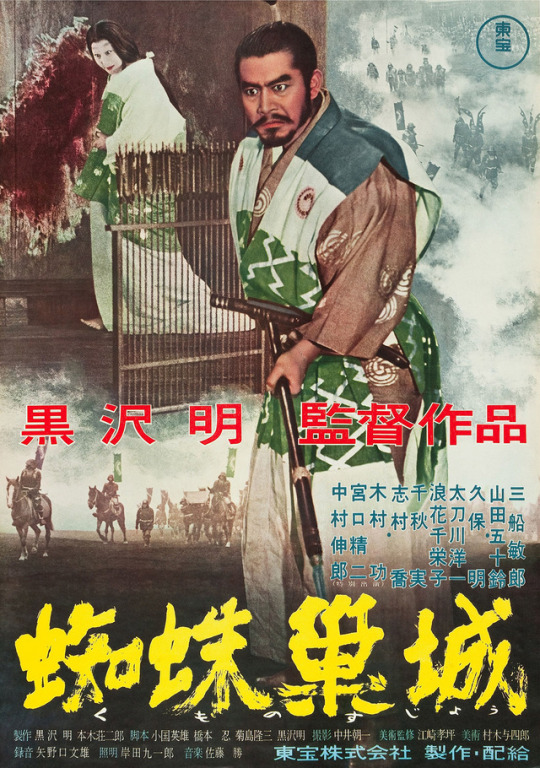
Six Questions With FilmStruck: Josh Boone
Writer-Director Josh Boone’s filmography includes indie romance STUCK IN LOVE (’12), blockbuster adaptation THE FAULT IN OUR STARS (’14), and coming soon comic book adaptation THE NEW MUTANTS (’18). A cinephile to the core, Boone spoke to FilmStruck’s Marya E. Gates about his early love of film, how he discovered the Criterion Collection, and what films he thinks everyone should stream immediately.
FS: What was the movie that made you fall in love with movies?
Josh Boone: There’s so many. Could you name just one?
FS: No.
JB: Right? You’d have to name a couple I think.
FS: You can name a couple.
JB: My dad had a very large collection of movies on Beta that he taped off HBO when I was a kid in the 80s and he had a lot of those movies from the 70s, those Jack Nicholson movies like ONE FLEW OVER THE CUCKOO’S NEST and FIVE EASY PIECES and CARNAL KNOWLEDGE. He had all these old Jack Nicholson movies, so I watched those a lot. Jack Nicholson was always my favorite actor. Those 70s Jack Nicholson movies got me into Bogdanovich and THE LAST PICTURE SHOW and all the BBS stuff. When you learn about movies it’s like one thing leads to another. Back then I had to buy Video Watchdog books every year, or an Ebert guide to try to find stuff that I hadn’t seen. I remember seeing E.T. vividly as a kid. It was the 80s, so all those Spielberg movies and THE GOONIES. THE NEVERENDING STORY was one of my favorite movies of all time. That was a big deal when I was a kid. I saw that in theaters a couple of times. I watched movie after movie after movie and then I amassed over the years laserdiscs and DVDs. I didn’t go to film school, I really learned everything from DVD commentaries, behind the scenes documentaries, reading books about movies, and just watching movies. So I watched thousands and thousands of movies when I was a kid. I’d say I watch much less now because it takes so much time to make movies you have much less time to study them. You use them for reference and things like that and you watch them, but not with the same passion that you watched them with when you were young because you have to let that go a little bit to go do the job you have to do, and put the time in to do it. You build it all up and then you hold it inside you and then you go and make movies.
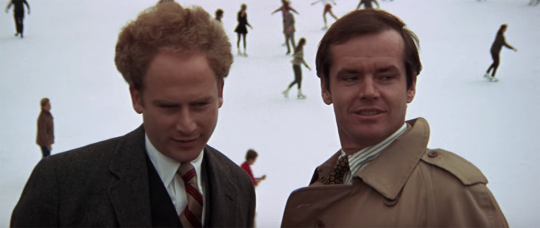
FS: That’s a great segue to the next question. What was the movie that made you want to make movies?
JB: I was obsessed with directors when I was young and I would keep file folders with every magazine clipping about David Lynch or Oliver Stone or Steven Spielberg or Quentin Tarantino. I had all these files on them. It’s hard for me to think back to before I even wanted to make movies because my best friend (Knate Lee) and I who I wrote THE NEW MUTANTS with, we’ve known each other since we were little kids. Since we were little Muppet Babies or whatever. Our moms were best friends. We made movies on home video growing up all the time. Really as early as like 7 or 8 because my dad had one of those over the shoulder Beta cams and his parents had a Hi8 or something and we would shoot movies and edit in camera. We started making BATMAN rip-offs where my dad would play the Joker or a BACK TO THE FUTURE rip-off and that gradually led to us writing our own scripts and things like that. It was sort of an organic, long-term process so it’s hard to say the specific movie. But I can say the movie-going experience of my life when I was 12 years old my dad took me to see J.F.K. and that was maybe one of the great movie events I had at the theater when I was young. I remember gripping the armrests of my seat so tightly that there are probably still impressions of them there today. I think Oliver Stone’s run From SALVADOR to NIXON is one of the greatest runs a director has ever had. Those ten movies he made with Bob Richardson, all those movies were really big in our lives when we were young. We’d spend our lives reading comic books and watching movies and listening to music, and Oliver Stone movies were some of the first movies that made us want to go and read history books. Movies opened us up to the entire world because we were raised by very religious parents, like evangelical Christians, so like Paul Schrader – who I think wasn’t allowed to watch movies until he left for college – it was a bit of a forbidden fruit. We watched them all the time and they were an escape and a good way to see what the world was actually like beyond the crazy religious stuff.

FS: What was your first introduction to the Criterion Collection?
JB: I used to have a friend named Bill Kelley who worked at newspaper called the Virginian Pilot, which was the main newspaper in Virginia Beach. He was a big movie buff and he had a laserdisc player and we would all go over to his house on Sunday nights and he always had this massive collection of laserdiscs that we would pour over - religious, and old Hollywood classics, and even Spielberg movies. He had a couple of Criterions and he had a big glossy, like a brochure almost, like a 50-page Criterion catalogue that they would send out back in the day, before you could go online and just scroll through everything. It was full color and it was as big as a vinyl record. It had pictures from all the movies and all the extras. You just started to want to check all those boxes off and watch them all. So I got a laserdisc player for Christmas one year and I think the very first one I had was SE7EN, which was one like 8 discs or something. It was ridiculous. It weighed a ton. So I started collecting laserdisc and Criterion editions and listened to commentaries and all that. Oliver Stone did big pioneering laserdisc editions. I have one of PLATOON and THE DOORS. They cost like $150 dollars and they were so heavy. I loved all of that stuff.
FS: What was the first film you streamed on FilmStruck?
JB: I think I streamed some extras before I actually watched a movie. Then I watched some Kurosawa and Bergman that weren’t released on disc yet. I like that Criterion has all these titles in their catalogue and they can’t get them all out immediately so they’ll have them on the site so you can stream them even though it might be a couple of years before they come out on disc. There were so many things on their that haven’t been released. Kieślowski is one of my favorite directors and I love Annette Insdorf’s books about him, so she wrote this book called Double Lives, Second Chances, which I have read a couple of times. She just released a book about movie opening scenes (Cinematic Overtures: How to Read Opening Scenes), like what great movies do them well and what a great opening scene is. I love that video series [on the Cinematic Overtures: How to Read Opening Scenes theme] where she goes over the opening of BADLANDS and a bunch of other movies. She’s so eloquent and a great historian. She’s a hero a little bit.

Those Kieślowski movies certainly meant an awful lot to me. I always loved those because I am a big fan of Philip K. Dick and when I say Philip K. Dick, I do love BLADE RUNNER and MINORITY REPORT and TOTAL RECALL, but those really are no way representative of what reading one of his books is like. The only movie that really feels like Philip K. Dick is A SCANNER DARKLY, which is really like a word for word adaptation of the book. Some of those metaphysical ideas that were in Philip K. Dick I found in Kieślowski as well and I thought all of that stuff was really interesting. I love Tarkovsky movies, as long and boring as some of my friends might think they are, they blow your mind and make you think of things you hadn’t thought about before. I love things that are imaginative. Like LA JETÉE, I love watching that and it’s inspiration on 12 MONKEYS.
FS: If the world were about to end what movies on FilmStruck would you recommend everyone stream before we all died?
JB: I’d put a Kieślowski on there. Certainly THREE COLORS: BLUE. I fucking love Kurosawa’s THRONE OF BLOOD with the arrows and all that. That one is amazing. A Cronenberg.
FS: We have THE BROOD.
JB: That is one of the scariest movies ever. Those little kids beating that lady to death. It’s pretty awful. I’d put that up if you really want to barf one night. This will do it for you. I love all those music docs like DONT LOOK BACK. I love Robert Altman. The fucking THE CONFORMIST for sure. I love love love [Jean-Luc] Godard’s stuff with Anna Karina. I love MASCULIN FÉMININ, even though she’s not in that, I love PIERROT LE FOU. I love all the Kurosawa stuff. THRONE OF BLOOD especially I love. The movie I would recommend the most right now because it’s not on Blu-ray is Kiyoshi Kurosawa’s 1997 CURE. It’s one of the scariest, best horror movies ever made. I’m so glad it’s on here because I can’t watch it anywhere else. I’m a huge Terry Gilliam fan. TIME BANDITS is one of my favorite movies from back when I was a kid. I love IN THE MOOD FOR LOVE, THE FRIENDS OF EDDIE COYLE, THE GRADUATE. All this stuff. It’s all just such great stuff.
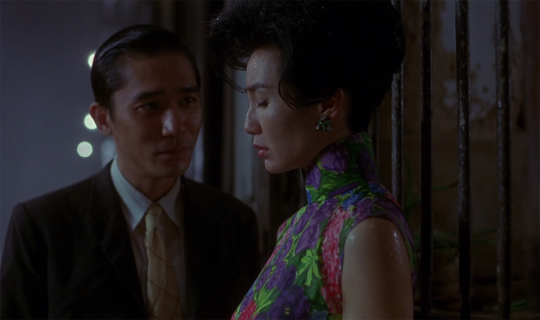
FS: Have you found anything while you’re browsing FilmStruck that you’d never heard of but just had to watch it?
JB: I go into the directors and I look through different filmmakers and I look through all of the ones that have introductions. Like, I will go through all of the ones that Guillermo Del Toro did an introduction for. I like when people come and talk about their favorite movies. I go through all the extras, all the additional things that you guys do that are exclusive and add context. When you guys had all those [Mario] Bava movies up, we just let those play. It’s good in the background. You don’t have to pay super close attention, but it’s like those movies look so amazing.
Shot by cinematographer Peter Deming (long-time David Lynch collaborator), and co-written by Knate Lee, director Josh Boone’s latest film THE NEW MUTANTS hits theaters on April 13.
#FilmStruck#Josh Boone#The New Muntants#X-Men#Criterion Collection#Akira Kurosawa#Throne of Blood#Robert Altman#David Lynch#Oliver Stone#Jean Luc Godard#Jack Nicholson#Krzysztof Kieslowski#Philip K. Dick#Carnal Knowledge#Natural Born Killers#In the Mood For Love#Annette Insdorf#Six Questions With FilmStruck#Marya E Gates
65 notes
·
View notes
Photo

How I Letterboxd #6: Sean Boelman.
Talking 2020 movie trends, the year’s best documentaries, and Elijah Wood’s death-stare with peach emoji lobbyist Sean Boelman.
“Honestly, there’s not much I like to do other than watch movies or go to theme parks, and one of those things wasn’t an option for months.”
In a year like no other for the movie business, it’s still possible to see hundreds of new films if you have the right connections. For professional critics, the downside of missing the in-person festival buzz and tent-pole previews is somewhat offset by the upside of being able to pace out your screenings in the comfort of your own home.
Wondering who might possibly hold the title of “the Letterboxd member who has watched the most new releases so far this year”, we poked around in the server room and found Sean Boelman, who has logged well over 400 films from 2020 in his diary. So far this year, Sean (20) has covered the Sundance, SXSW, Tribeca, Florida and Fantasia Film Festivals; he also reviews films via screeners sent through from PR firms. Sean hails from Orlando, Florida, and is the founder of movie review platform disappointment media, which he created to promote a wider range of voices in film criticism.

Park So-dam and peach in ‘Parasite’ (2019), directed by Bong Joon-ho.
How long ago did you join Letterboxd?
I joined Letterboxd back in 2015. I attended a film class that summer and the teaching assistant had an account and encouraged all of us to create our own. I’ve been using the app religiously ever since.
You’re our youngest ‘How I Letterboxd’ participant to date. How would you describe your experience on Letterboxd as a teenager?
When I was in high school, I was one of the earliest adopters of the app, so I told all of my friends about it and suggested that they use it too. By the time I got to college, it was already in the mainstream within the film community, so I was just the guy with the most extensive account. I love how Letterboxd is a community for film fans to talk about films we love, and with the exception of a few trolls every once in a while, it’s really conducive to good discussions.
Which features have you found the most useful?
I’m definitely an obsessive logger. The diary feature is without a doubt my favorite part of the app. I started logging in June 2015 and have logged every feature-length film (and some shorts) I’ve watched since. I made the decision not to retroactively mark everything I’ve seen in my life as watched, because that would be too monumental a task. I also find Letterboxd particularly useful during a festival. It’s interesting to see the buzz about what movies people do and don’t like so that I can adjust my schedule accordingly.
And what’s a feature you wish Letterboxd had?
I really loved when you guys changed the stars to flames for Portrait of a Lady on Fire. It would be awesome if you started doing that more regularly for releases that get a sizeable following. Like, give Parasite peaches.

Ivana Baquero and Doug Jones in ‘Pan’s Labyrinth’ (2006), directed by Guillermo del Toro.
What film kicked off your passion for cinema, and specifically, which films or community of film fans motivated you to watch as many films as you can find for the current year?
I’ve loved cinema for as long as I can remember, but the film that I credit with really birthing my love for film as art is Pan’s Labyrinth. When I saw that in theaters at the—probably too young—age of six, I felt like [Guillermo] del Toro transported me into Ofelia’s world, and I then realized what magical capabilities the medium of film has.
As for why I’m motivated to watch so many new releases, I have a bit of an issue with saying no, haha. As a film critic, I’m inundated with requests to review movies, from major studio releases to B-movies most people have never heard of. I’ve done my fair share of adding titles to TMDb. I end up reviewing anywhere from ten to twenty new releases a week, depending on the season.
You’re a film critic, but you only post short summaries on Letterboxd instead of your full reviews. Why share only brief thoughts?
Much of this boils down to the fact that when I watch something, it’s still under embargo for full reviews, so I can only log it in my Letterboxd diary and leave a little blurb. I also find that there isn’t as much room for humor in my full reviews, so I like using this platform to get my jokes out.
So, as of writing, you’ve ranked 457 films from 2020. What percentage of your total films seen are from these new ‘Roaring Twenties’?
Out of the films I’ve logged on Letterboxd, it seems like about ten percent are listed on Letterboxd as movies from 2020. The actual percentage would be quite a bit lower than that, though, since my Letterboxd doesn’t include anything I watched prior to June 2015.
Before Covid-19 shutdowns, how many of these films did you have the opportunity to see in theaters? Which were your most memorable theatrical experiences of the year?
In 2020, I was able to see 29 films in theaters, either paid or in a theatrical press screening, before they shut down. I’ve also gotten to see some since the shutdown in drive-ins or from the Florida Film Festival holding socially distanced, in-person screenings. But I definitely went through a bit of theater withdrawal. I missed the smell of popcorn dearly.
For my favorite theatrical experiences in 2020, seeing The Invisible Man on opening night with a packed crowd was definitely a hoot. I was sad at first to have missed the press screening, but like most great horror movies, it was awesome to see it with an audience and hear them gasp in surprise in the action sequences. Another one was getting to see Weathering with You in 4DX. Normally you wouldn’t think of that as a big, spectacle-driven 4DX movie, but it was super-immersive in all of the Sunshine Girl scenes.
And I have some awesome memories from SXSW 2019. At the world premiere of Us, I was pushed into Elisabeth Moss. I once got a death stare from Elijah Wood who seemed to think I was going to approach him. Don’t get me wrong, I love his work—but I wasn’t going to because of etiquette. I watched Long Shot with one of the world’s leading geneticists and then got to see Boyz II Men perform live. And I laughed hysterically when Robert Patrick said in a Q&A that even he didn’t understand the movie he was in. It’s a fun time. I definitely encourage any cinephiles to attend an in-person festival when things get back to normal.
You have more than seventy films in your 2020 list with five or four and a half stars. Would you describe yourself as a generous rater?
I was definitely a lot more generous when I started my Letterboxd than I am now. I’m sure if I rewatched some of those films I logged in 2015 and 2016, they’d get a lower rating today. But I really don’t mind it. I don’t see my purpose as a critic as to tear apart the filmmaker’s art—I want to appreciate it. Maybe I’m a little liberal with my five-star rating, but what can I say? Gosh, I love movies. And for me, a five-star rating doesn’t mean perfect, it means great. I don’t think there’s such thing as a perfect film. A five-star [rating] from me means that it connected with me in an extraordinary way. I reserve the ‘like’ for films that set themselves apart from the rest of the five stars by some virtue. If I give it a five and a like, now that’s something you should definitely not miss.
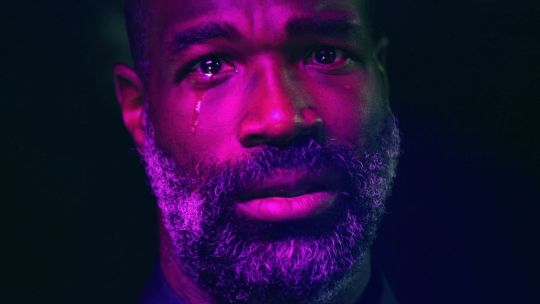
Tunde Adebimpe in ‘She Dies Tomorrow’ (2020), directed by Amy Seimetz.
Your best film of 2020 so far is Amy Seimetz’s She Dies Tomorrow—it’s also your number three of all time. What resonated so strongly with you about the film? Are you surprised about its divisive reaction?
I absolutely adore She Dies Tomorrow. I’ve really admired Amy Seimetz’s work as an actress for a long time, and her work behind the camera on this blew me away. I haven’t seen Sun Don’t Shine yet, but it’s on the top of my list. It connected with me because it really captured some of the anxieties I’ve been going through recently. She obviously didn’t set out to make the definitive Covid film, but that’s what it ended up being. And of course, how could you not love that film’s extraordinary use of color. It looks magnificent. But I’m not at all surprised at how divisive it is. It has a very segmented and unorthodox narrative, and not everyone is a fan of that type of structure. I understand why it hasn’t worked as well for some people.
What are the other most overlooked films of 2020 so far?
In terms of overlooked 2020 films, I think the big one is the Russell Simmons exposé On the Record. I think that Kirby Dick and Amy Ziering’s The Hunting Ground is one of the most harrowing documentaries I have ever seen in my life, and On the Record combines a lot of that relevance while also offering a really compelling look at the life of a powerful woman in the music industry. It’s great, and only about one thousand members have logged it on Letterboxd. Watch it on HBO Max!
There are a lot of great movies released in 2020 that are widely available and [fewer than] 5,000 people having logged them on Letterboxd. A White, White Day is a great little revenge thriller from Iceland. But what makes it stand out from the genre is that it’s a lot more understated and character-driven than most. It has similar vibes to You Were Never Really Here, but perhaps even quieter. Maria von Hausswolff’s cinematography is absolutely breathtaking, and Ingvar Sigurðsson gives one of my favorite performances of the year. It’s just a gorgeous film.

Hlynur Pálmason’s Icelandic revenge thriller ‘A White, White Day’(2019).
The Painted Bird is a bit harder to recommend because it is by no means fun, but it’s one of those that you have to watch once and will never want to see again. I described it as “auteur shock cinema”. It’s a three-hour-long Holocaust drama that’s bleak and filled with torture, but it’s powerful, heartbreaking and harrowing. It also features great performances all around, especially from child actor Peta Kotlár.
I think Michael Winterbottom is one of the best directors working right now and I’ve always loved what he did with the Coogan-Brydon combo in his The Trip series, and this year’s entry, The Trip to Greece, is probably the best one yet. Over the course of the decade the series has spanned, Coogan and Brydon have changed a lot, and this series—in which they play themselves—has adapted to reflect that. This one’s a lot more heartfelt, but still features plenty of great impressions and tantalizing food shots. This really is one of my favorite film series of all time, so you should check all four out! Some other overlooked films I can think of are Jasper Mall, Aviva and Sword of God.
Which 2020 films would you say are the most overrated? Any absolute must-avoids?
This is going to be a really hot take, but there was a trifecta of homebound horror flicks that came out in July—Relic, The Rental and Amulet—and I didn’t care for any of them. I think all the directors are talented and show a lot of potential, especially Natalie Erika James, but I wasn’t a fan of any of the films. As for ones to avoid, I try not to call out bad movies unless there’s a reason to [do so], and there are only two of those this year: Coffee & Kareem and Elvis from Outer Space. Coffee & Kareem is just offensive, and Elvis from Outer Space tries to be so-bad-it’s-funny and falls flat.
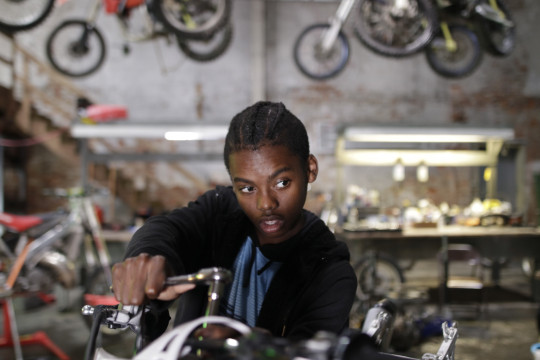
Jahi Di’Allo Winston in ‘Charm City Kings’ (2020), directed by Ángel Manuel Soto.
What films that you’ve been fortunate to preview via screeners or film festivals are you certain will be a big deal once they’re available on general release?
Ugh, there are some I wish I could talk about but I’m still under embargo! So I’ll have to talk mostly about festival ones. Alice Gu’s The Donut King is wonderful. It was supposed to debut at SXSW, but obviously that got cancelled. On one hand, it is a food doc about donuts—who doesn’t love donuts?—but it’s also a moving story about the immigrant experience. It scored distribution from Greenwich and should be released soon. Charm City Kings is great, and HBO Max picked that up to be released sometime this year. That’s a really awesome coming-of-age movie with a story by Barry Jenkins. And I saw a work-in-progress cut of this indie called Millennium Bugs made by an up-and-comer named Alejandro Montoya Marín. He was part of the Robert Rodriguez show Rebel Without a Crew. It’s a great little movie about Y2K and the Latinx experience that will be debuting online at Dances with Films and is looking for a distributor after that.
Fill in the blank: “2020 is a great year for ____ in film”. What patterns have you noticed?
I really think that 2020 is a great year for documentaries. We thought 2018 was a great year with Won’t You Be My Neighbor?, Free Solo, RBG and Three Identical Strangers, among others, but this year is shaping up to be even better. Boys State, The Donut King, On the Record, Rebuilding Paradise, Dark City Beneath the Beat, A Secret Love and Disclosure are all excellent, and that’s just scratching the surface.
I think what makes these documentaries stand out is their ability to make the viewer feel connected to their story. I love documentaries that take a story you might not have otherwise heard of and tell it in a way that feels intensely personal. By taking these stories like the problems inherent in American democracy, the immigrant experience, the California wildfires, the #MeToo movement, and issues with trans representation on screen and telling them in a way that people can relate to them even if they can’t personally identify with their subjects, these documentary filmmakers are making the world a more compassionate place.
What films are you most looking forward to that are scheduled to release in 2020? Any awards season predictions you feel strongly about?
In terms of mainstream releases, I’m most excited for No Time to Die, unless it gets pushed to 2021 like some have rumored. I’m a huge Cary Joji Fukunaga fan, so I’m excited to see what he does with the franchise. For indies, I’m really looking forward to seeing Promising Young Woman, The Green Knight, Save Yourselves!, Nomadland and Another Round.
For awards seasons predictions, there are a few I’m pretty confident about based on what I’ve seen. Boys State is an early frontrunner for Best Documentary. I think Eliza Hittman will get some love for Never Rarely Sometimes Always. Dev Patel is a pretty good bet for a Best Actor nod for The Personal History of David Copperfield, even though the movie itself probably won’t get much more love. And there’s an upcoming Netflix movie that has a screenplay nomination in the bag, and maybe a couple other categories too, but shhhh, I’m under embargo on that one so I can’t say more.
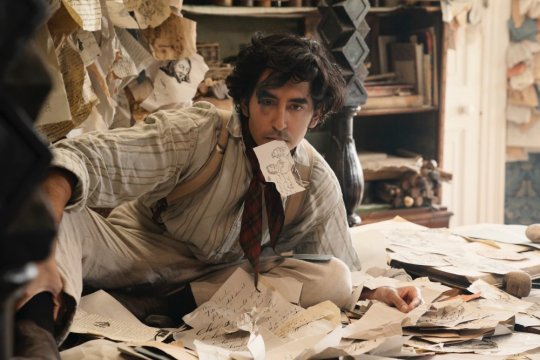
Dev Patel in ‘The Personal History of David Copperfield’ (2019), directed by Armando Iannucci.
You keep thorough distributor rankings as well as year and franchise lists—how would you sum up the way each of these recently formed companies inspires you?
Obviously A24 and NEON have amassed a pretty big cult following, and for good reason. There’s a particular identity their films have, despite the differences in genre, and I enjoy ranking them because of that. For the streamers, their films are a little more diverse, but I use my lists as a way for people to discover some of my favorite films they can watch at the click of a button. And for Blumhouse, it’s just because I absolutely adore the work Jason Blum does in supporting filmmakers’ voices. I’m usually pretty cool-headed around celebrities because interacting with high-profile people is a part of our job as critics, but I admittedly froze when I met him at SXSW since I’m such a big fan of his. I’ve always said that once I score an interview with him, I can “retire” as a critic, haha.
You’re of Guatemalan descent. Which films do you best relate with your Latino heritage?
Of course, Pan’s Labyrinth is a big deal for me given the fact that it was a formative film in my life. [Alejandro] Jodorowsky’s The Holy Mountain is one of my favorite Latino classics. El Mariachi is great because Robert Rodriguez is the epitome of Latino DIY filmmaking and has always been such an inspiring figure. I got to interview him last year for Alita: Battle Angel, and it was an awesome experience. And in terms of more recent films, I think the Netflix doc Mucho Mucho Amor really captures the importance of community amongst Latinos.
What films are highest on your list of shame?
I will say that I’ve seen more classics than I have logged on Letterboxd, but there are still a few embarrassing gaps on my list. I love the work I’ve seen from Akira Kurosawa, Brian De Palma, Agnès Varda and Chantal Akerman, and I really want to finish up their filmographies. Probably the most shameful omission I have is the fact that I’ve never seen a film by Ingmar Bergman. I’ve been lightening my workload for my site a bit, so I’m hoping to catch up on some of those soon.
Who are three Letterboxd members you recommend we follow?
My friend Camden Ferrell who co-founded disappointment media with me. He’s also very passionate about film and does a lot of reviews for the site. Another one of our contributors is Sarah, who came on to the team during Sundance this year. She’s great and basically started the Portrait of a Lady on Fire fandom. I also want to give a shout-out to Jon Berk who was actually the critic to challenge me to start a blog back in 2016 when he was doing the Doug Loves Movies challenge, and now I’ve gotten to where I significantly outpace him, haha.
Sean’s site accepts story pitches from, and offers constructive feedback to, aspiring writers from under-represented and minority groups. Email Sean to find out more. Check out these 2020 rankings from Letterboxd members who have watched more than 100 releases this year: Orlan Harris, Austin Burke, Jerome, Joey Magidson, Kevin Yang, Jack, Jordan Raup, Matt Neglia, Weather Boy, Julian D, Johann Rucker, Mikey Brzezinkski, Ewan Graf, Denis Eremeev, Aaron King.
#How I Letterboxd#letterboxd members#letterboxd community#film criticism#film critic#latino cinema#portrait nation#letterboxd
1 note
·
View note
Text
Best Films of 2017, Part I
10. Get Out (dir. Jordan Peele)

“... Now sink into the floor.”
Making the jump from sketch comedy to the big screen is a transition fraught with creative peril. The list of those who have tried and failed to navigate its intricacies is a list filled with a lot of talented people, and we can rest assured that not a one of them decided to cut their directorial teeth on a project as impossibly ambitious as a pseudo-satirical horror film that takes on racism in American society. But where so many others have failed, Jordan Peele has succeeded brilliantly, kicking off his directorial career with the latest in a growing string of Sundance-premiered, subtext-heavy horror masterpieces.
Blatantly confrontational in all the best ways, that Get Out emerged from the major studio ecosystem is a minor miracle in some senses, but really is a testament to the strength of Peele’s razor-sharp (and now, Oscar-winning) original script. Taking aim at the casual, insidious racism of liberal white America, Peele meticulously picks apart the ways that African American work and creativity is systemically marginalized, colonized, and exploited. The film’s pointed symbolism and fearless direction make it a frequently discomfiting watch, but Get Out is all the more essential for it. Jordan Peele is not here to comfort his white audience, he’s here to wake us the fuck up.
Despite it’s satirical underpinnings, Get Out is a horror film, through-and-through, and its brilliance lies in large part with its keen ability to indulge its more outlandish horror inclinations right up to the tipping point from horror to satire. Peele flirts with that line brilliantly, getting every last bit of mileage out of each genre conceit that he either exploits or subverts, before snapping us back into perspective with one simple reminder: if you think this is a joke, you’re missing the point ...
*Cough* Golden Globes ... *Cough* *Cough*
9. War for the Planet of the Apes (dir. Matt Reeves)
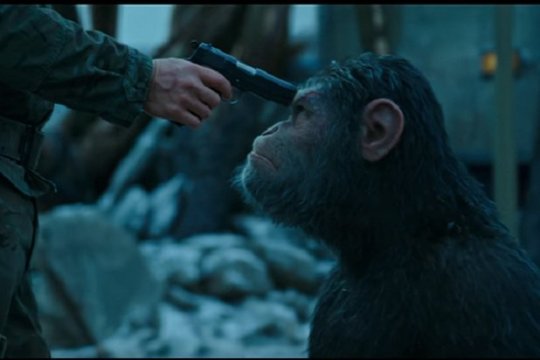
“Apes together strong.”
Looking back on the original Charlton Heston epic, it’s not exactly plain to see where Matt Reeves drew inspiration for his utterly brilliant Planet of the Apes reboot trilogy. Despite its esteemed status in the sci-fi pantheon, the original views now as little more than a campy 70s genre flick with an interesting premise and a great final twist. But from those bones (and conveniently ignoring an ill-advised early 2000’s remake) Reeves has crafted a franchise masterpiece. An unprecedented hybrid of muscular action filmmaking and art-house drama, and deftly borrowing elements of silent film, it’s difficult to overstate just how impressive the entire Planet of the Apes trilogy is. However, it’s final installment, War for the Planet of the Apes, stands as it’s greatest entry – a sweeping epic built with an uncanny feel for grandiose spectacle and an unmatched command of the jaw-dropping technical wizardry that makes its central performance possible.
Andy Serkis’ groundbreaking motion capture performance as Caesar, leader of the titular apes, is the film’s true foundation. You could make a convincing argument that Andy Serkis’ Caesar is the greatest hero of 21st century genre filmmaking, but it’s status as a monumental achievement in the marriage of acting craft and filmmaking technology is frankly unquestionable. That Serkis’ performance has been all but forgotten by major awards bodies throughout this remarkable three-film run will not be remembered kindly in the annals of film history – this performance is the stuff film history is made of. Reeves stages one brilliant, sprawling action set-piece after another, and the uncanny physicality of Serkis’ performance injects them with the dose of emotional resonance that elevates it well above traditional summer blockbuster fare. Honestly, filmmaking of this scale has rarely been better.
8. The Shape of Water (dir. Guillermo del Toro)

“When he looks at me, he does not know what I lack, or how I am incomplete … He sees me for what I am, as I am.”
The Shape of Water is everything you could want from a Guillermo del Toro film – fantastical, brutal, and ultimately hopeful; a beautiful modernist fairy tale with a definite moral compass. Del Toro himself has described The Shape of Water as his favorite film that he has ever made, and it’s easy to see why he’s so infatuated. A meditation on the lives of outsiders and the ways that love pushes across boundaries of convention, del Toro’s sincere affection for the characters onscreen is clear throughout, with each new wave of its strangely rapturous romance lending new evidence to the greatness that del Toro has so lovingly crafted.
A testament to his sterling reputation, del Toro assembled one of the year’s best casts to bring his sweeping vision to life. Octavia Spencer, Richard Jenkins, and Michael Shannon are all impressive in their supporting turns, but make no mistake, this film belongs to Sally Hawkins. She turns in career-best work as a mute janitor at a secure government facility who forms a deep connection with an amphibious creature imprisoned there. Hawkins conveys more in a glance than an average performance can do with an entire script’s worth of dialogue. If there’s a better performance that’s been committed to film this year, I’ve yet to see it …
Guillermo del Toro is one of cinema’s most unique voices, and The Shape of Water is the kind of film only he could make. It moves in the span of a breath from bracing violence to endearing whimsy to magical sensuality. In the hands of another, it could easily have been ludicrous, but with del Toro’s otherworldly creativity, it’s simply lovely.
7. I, Tonya (dir. Craig Gillespie)
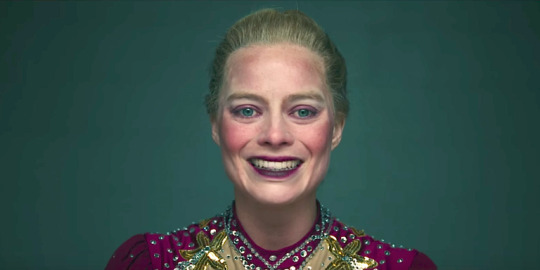
“There's no such thing as truth. It's bullshit. Everyone has their own truth, and life just does whatever the fuck it wants.”
Tonya Harding is one of the most infamous figures in American sports history, having been implicated in a plot to attack her biggest rival to improve her chances of making the Olympic figure skating team. Hers is a story stranger than fiction, and the electric biopic I, Tonya brings it to the big screen in all of it’s bizarre glory. Far from a household name, despite having an award-winning indie (the stellar Lars and the Real Girl) and two warmly received major-studio pics under his belt, I, Tonya is director Craig Gillespie’s most dynamic film to date. Leaning into the scripts more out-of-the-box tendencies, Gillespie has made the most batshit biopic since Todd Haynes’ kaleidoscopic Bob Dylan exploration, I’m Not There. He breaks all the rules, and a lot of it has no business working. But work it does - a directorial feat for which Gillespie has not been properly recognized.
But without Margot Robbie’s electrifying lead performance, it all may have been for naught. Robbie is quickly claiming her place as one of her generation’s finest actresses, and her embodiment of Harding as a tragicomic figure undone by her own inability to accept responsibility is nothing short of fantastic. Robbie’s Harding is an internal battle between the fierce competitor and battered victim, and highlights the ways in which those dual realities eventually were inextricably interwoven. It’s impressive work that walks the tough line of bringing a publicly reviled figure a bit of deserved sympathy - but not too much.
The film sets out to contextualize Harding’s public life, grounding everything that leads up to “the incident” in the abusive nature of her home life, but never going so far as to excuse Harding entirely. The film’s brilliant fourth-wall-breaking narration - pulled form real-life interviews with Harding, her ex-husband (Sebastian Stan), and her mother (a brilliantly caustic Allison Janney) - serves to highlight how frequently their accounts of the Kerrigan attack clash not only with each other’s, but with the plain reality of the situation. It’s a conceit that consistently sticks the landing, one darkly comedic beat after another, and makes for one of the most purely engrossing films of the year.
6. The Florida Project (dir. Sean Baker)
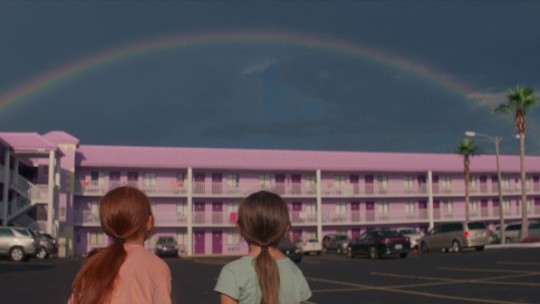
“You know why this is my favorite tree?
Why?
Because it’s tipped over and it’s still growing.”
Sean Baker made serious waves at Sundance with his debut feature Tangerine. Not only did the film feature mostly non-professional actors, but Baker shot the whole thing on his iPhone – no small feat for a film deemed worthy of the biggest indie film festival in the world. Baker shrewdly leveraged that success into a budget that afforded him the use of an actual crew. While adapting his on-the-fly style to the inherent inertia of a larger on-set footprint wasn’t always smooth, the results of his efforts are undeniably superb. His sophomore effort, The Florida Project, is fresh independent filmmaking of the highest order.
Once again employing mostly first-time professional actors – with the notable exception of Willem Dafoe, who effortlessly turns in one of the finest supporting performances of the year – Baker endeavors to tell a story that’s built from bits and fragments of real-life that he’s simply lucky enough to observe. What he sees pits the desperation of poverty against the buoyant idealism of childhood. The innate optimism of its child characters stands constantly at odds with the increasingly grim realities with which the adults in their orbit try (and often fail) to grapple. Few films can so deftly play as gritty realism and buoyant fantasy at once, but The Florida Project walks the line with tragic grace.
Now two-for-two, Baker is positioning himself alongside the likes of Andrea Arnold as a master of the realist style, with a keen eye for drawing pathos out of the real lives of those living in societies margins. Much of what you see on the screen may seem like little more than a snapshot, but it takes a special artist to paint such a vibrant portrait of a segment of American society that many would prefer to ignore. Very few filmmakers in the world could make a film anything like this one, and it’s entirely possible none of them could have made one this beautifully compassionate.
#best films#Best Films of the Year#best films of 2017#oscars#academy awards#i tonya#the florida project#get out#war for the planet of the apes#the shape of water
5 notes
·
View notes
Text
Epic Movie (Re)Watch #193 - Pacific Rim
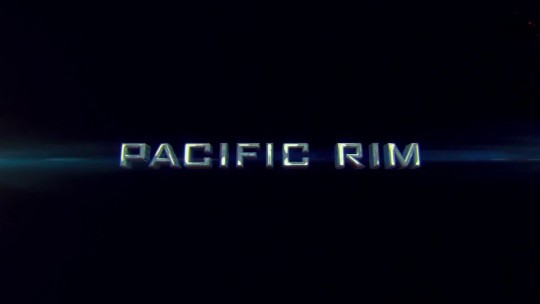
Spoilers Below
Have I seen it before: Yes
Did I like it then: Yes.
Do I remember it: Yes.
Did I see it in theaters: Yes.
Was it a movie I saw since August 22nd, 2009: Yes, #242.
Format: Blu-ray
1)
Raleigh: “When alien life entered our world it was from deep beneath the Pacific Ocean.”
This is actually a really interesting concept and break from the usual alien invasion movies. It keeps the movie incredibly sci-fi but gives the monsters a much more earthy quality to them. And opening the movie with the idea establishes the world we live in right away. In fact, the entire prologue does an excellent job of clearly and quickly establishing the world of Pacific Rim (I consider the prologue everything before Raleigh and Yancy go and fight the monster, even though the film’s title takes 16 minutes to show up).
2) The monsters in this film are referred to as Kaiju and that fact shows the incredible respect the filmmakers are showing to the genre they’re playing in. For those of you who don’t know, giant monster movies made in Japan like Godzilla, Mothra, Rodan, etc. are referred to as Kaiju films so just by embracing that genre name for this film shows they’re playing in a similar world. I just like that that’s the path they went down.

3) Ramin Djawdi’s score for Pacific Rim is absolutely kickass. The German composer is probably most known for his work on the first Iron Man and “Game of Thrones”, so audiences for those projects are familiar with the fact that Djawdi can get you pumped through music. Pacific Rim is no battle, with the main theme being an electric guitar heavy and absolutely energizing anthem of badassery that gets the audience ready for battle. I suggest everyone listens to it.
4) Charlie Hunam as Raleigh
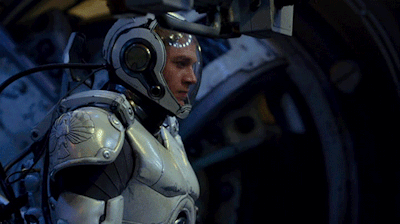
Raleigh is rough around the edges but in a way the audience can appreciate. He’s not a jackass, he’s not a jerk, he’s just a bit macho. But he’s still a nice guy (not Nice Guy™), showing kindness to much of the cast of characters throughout the film (Mako, Pentecost). There’s an old school roguish charm to him, but Hunam is also able to play the grief that marks Raleigh for a lot of the film.
Raleigh: “I was still connected to my brother when he died.”
That is an incredibly rich and unique conflict, to know what it feels like to die and live while also knowing that’s what your family felt in their last moments. Hunam is able to work with this well in a number of scenes and while at time his American accent can be a bit distracting his performance overall is damn good.
5) This film does a very good job of establishing minor and supporting characters so that even if they only have a few minutes of screen time you remember them. This includes Yancy, Choi, and all the other Jaeger pilots. Through combined visual design and unique character writing, they stand out.
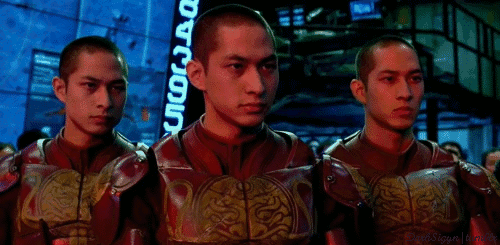
6) The first Kaiju/Jaeger fight - while not the best in the film - still strongly establishes the film’s intense action. It is important for the audience to know the rules in these fights early on. To know that the Kaiju and Jaeger are close to equally matched; neither is swifter, neither is bigger, it’s a really intense skirmish between opponent of equal size and strength. Establishing that well early on is important and exactly what this film did.

7) Idris Elba as Marshall Pentecost

I think Elba gives the best performance in the entire film. Pentecost is such an enigmatic character, he’s not an open book, but instead of feeling underdeveloped (which is a risk with such characters) he’s interesting. You can tell there’s more to Pentecost than we’re being told because Elba works so well wight he part. He just radiates leadership and authority in a multifaceted performance. You get his hard edges, his no nonsense behavior, his occasional jackassery, a caring father figure, a loyal soldier, and a driven man all in one package that is Idris Elba. I fucking love Elba in this film.
8) Rinko Kikuchi as Mako.

Mako’s awesome. I love Mako. She’s…it’s hard to put into words. She’s an incredible strong character with deep rooted conflict and motivations which Kikuchi is able to carry with her always. This conflict is good because it strongly influences Mako’s choices in the film, which in and of themselves can breed more conflict. You can just tell that while Mako is good in her current position as Pentecost’s assistant(?) that she can do SO much more. You understand that through the way she interacts with Raleigh, the ease she handles the tasks given to her, you know she’s not reached her full potential yet even though she wants to. And you just freaking root for her to go further, to get what she wants, something which I think is equal parts Kikuchi’s performance and the writing for the character. It’s also worth noting her platonic relationship with Elba is very strong and helps develop both characters.
9) Burn Gorman and Charlie Day as both crazy strong in their roles also, breathing such life and fun into their parts and the film as large. The strong bickering Newt and Herman is incredibly fun to watch and while Day does get more time to shine as Newt that doesn’t mean Herman is any less interesting. They’re both such a fun team to watch.

10) Something director Guillermo Del Toro is able to do incredibly well across all his films - largely through production design and practical sets/effects - is that he creates a world which is fully alive. Just from looking at it you get an understanding of how it works, how it’s different from our world. It is striking, full of life, and totally unique.
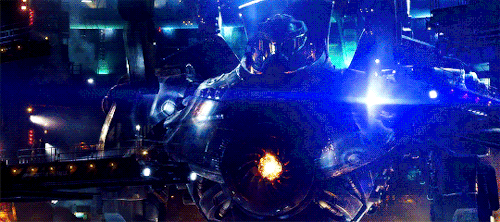
11) Mako’s candidate trial.
youtube
Did I mention I love Mako? Because I do. And this scene just makes me love her more. The connection and kinship she is able to immediately establish with Raleigh is crazy good. It just FEELS right watching the pair of them on screen. Their relationship is in many ways the heart of this film and this scene gets you invested in them. You just know that they’re the right for each other.
12) Newt’s decision to drift with a Kaiju is a strong example of stakes. How far he’ll go to do what he think is the best thing to do because the alternative of doing nothing isn’t good enough. I dig it.
13) One thing I like is that Mako isn’t really sexualized or objectified in any way. I don’t even think we get a shot of her half naked or anything. The film shows off how sexy Raleigh’s body is more than it does Mako’s and I really freaking love that.
14) There are a few comparisons to make between this film and Independence Day. The fact that it’s humanity fighting against alien invaders (even though these aliens are from below the sea) is one thing, but then we learn this.
Newt: “These being, these colonists, they take over worlds…”
It’s very similar to how Bill Pullman notes the aliens in Independence Day are like locusts, moving from world to world and taking over natural resources. There are more coming up, and it’s not even a comparison of quality or saying one is a ripoff of the other, it’s more just I like the similarities because I like both films.
15) Mako’s backstory.

Through showing us Mako’s backstory, not just telling us, the film makes it all the stronger. It perfectly explains her motivations and stakes throughout the film in a way which is simple, elegant, and ready to remember. Also the way the film cuts between Mako’s memory, Raleigh in Mako’s memory, and the real world of Gypsy Danger is very strong. All in all, it’s just a strong example of backstory.
16) Ron Perlman as Hannibal Chou.

Okay, Ron Perlman is always a wonderful character actor. I have never seen a Ron Perlman performance which I have not liked. He just breathes this consistent charisma, energy, and fun into every performance he has ever given so Chou is no different. While he may be more devious and deceitful than say Hellboy, Perlman has no less fun with the part and just makes Hannibal Chou one of the surprise stand out characters in the film.
17) The first Jaeger fight with the Kaiju in Tokyo is just plain fun, a nice prologue to the upcoming Gypsy Danger fight but one that steps up the Kaiju VS Jaeger fun introduced in the film’s opening.
18) Gypsy Danger VS Kaiju.
youtube
The extended fight sequence is 100% fucking awesome! A perfect collaboration of, “oh that’s so cool!” and some, “oh that’s so stupid!” moments but in a way that is totally fun. It’s giant robot vs giant monster entertainment at its purest in a way which is just totally entertaining. Some highlights from the fight include:
Raleigh: “I think this guy’s dead, but let’s check for a pulse. (They shoot him with a plasma gun.) No pulse.”
THEY USE A FREAKING CARGO BOAT TO BEAT ON THE KAIJU LIKE IT’S A BASEBALL BAT!
THE KAIJU HAS WINGS! OH MY GOD THAT’S SO COOL!
And of course…
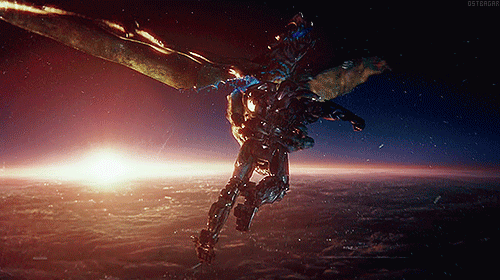
THEY’VE GOT A FREAKING SWORD!!!!!
More than anything else the best scene in the film (which this is) shows off all the imagination which can go into one of these fights and all of Gypsy Danger’s skills as a fighter.
19) Is this really necessary?
Newt [examining the dead Kaiju]: “It’s pregnant.”
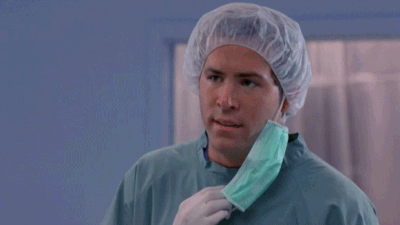
This whole moment feels a little extra. Like, couldn’t the Kaiju brain just be intact after the fight? Although it does lead to Hannibal’s “death” and a great post credits scene.
20) Okay, I’m tearing up a little bit at the goodbye Pentecost has with Mako before he gets in a Jaeger. Because they both know this will kill him and I just…okay, I’m good.
21) The best speech since Independence Day.
youtube
22) Something I haven’t really talked about yet is drifting. Drifting with another person in the context of the film is such an intimate and strong connection. It is pure relationship, pure honesty, and I freaking love it.
23) The climactic fight with the category five fight is really a dual fight between the two Kaiju in a well paced, choreographed, and smoothly edited moment. You are never taken out of the moment during the fight due to shoddy craftsmanship, it is all just really smooth.
24) I think the final dive into the breach is really well done because there is a genuine question of if Raleigh will survive or not. The first time I saw this I thought for sure he would die and they wait until the last minute possible to get him out there, just upping the tension throughout. It’s really strong.
24.1) The final thing in this movie that reminds me of Independence Day is Raleigh sending his ship right into the enemy to explode feels a lot like this:

(GIF source unknown [if this is your GIF please let me know].)
25) I actually love that this movie doesn’t end with Raleigh and Mako kissing. You can head canon it as anyway you want. I see it as platonic, but you can also see it as they know each other better than anyone else so they don’t need to kiss to know how they feel about each other. I just find it very strong.

26) Remember how I mentioned a post credits scene in note #19?
youtube
Pacific Rim is just really incredibly fun. You can tell that Guillermo Del Toro is enjoying the world he helps to build, with sheer amazing giant robot vs giant monster action. The character drama and motivations are surprisingly poignant, the actors are incredibly strong, the writing is top notch, and it’s just...it’s so freaking good. It’s so freaking FUN! Go watch it. Now. Do it! Please! It’s that good.
#Pacific Rim#Guillermo Del Toro#Idris Elba#Charlie Hunnam#Rinko Kikuchi#Charlie Day#Burn Gorman#Ron Perlman#Epic Movie (Re)Watch#Movie#Film#GIF
396 notes
·
View notes
Text
Favourite films from 2017
1. Star Wars: The Last Jedi
Directed by Rian Johnson

Star Wars fans suck, and I’m so happy to see Disney wrench the franchise from their greasy paws and deliver it to a general audience. Rian Johnson picks up where J. J. Abrams left off by fleshing out the character development of the new franchise leads. Poe learns hard lessons about sacrifice. Rey and Kylo’s complex relationship is given more layers. Even the oft-criticized Finn and Rose subplot is an important bit of character development for Finn to gain unconditional courage. The movie is highlighted by standout performances from Adam Driver and Daisy Ridley, a career best Mark Hamill and an iconic turn from Laura Dern. Rian Johnson delivers rousing action sequences (_that _throne room scene) and emotional highlights. Accompanied by polished sound design, visual (and practical) effects, and John Williams doing what he does best, The Last Jedi is one of the franchises best. It brings the franchise into a new era, reinstating the true spirit of Star Wars- that anyone can be a hero, as long as we look to the stars and hope
2. Lady Bird
Directed by Greta Gerwig

It’s hard to stand out in the field of coming of age movies, but Greta Gerwig manages to do it and tell a story that is simultaneously unique and relevant. The often-ignored daughter-mother relationship is given full attention, exploring some poignant moments in middle age and young adulthood equally well. This is an incredible script that makes every plot detail and situation count, giving the actors a lot to work with. Saoirse Ronan and Laurie Metcalf deliver in spades, playing off each other with incredibly nuanced performances. Gerwig performs marvellously, allowing her actors to find the moments of humour and melancholy in her script, and creating a visually pleasing movie to boot. That she manages to do this all in her directorial debut is a remarkable achievement.
3. Logan
Directed by James Mangold
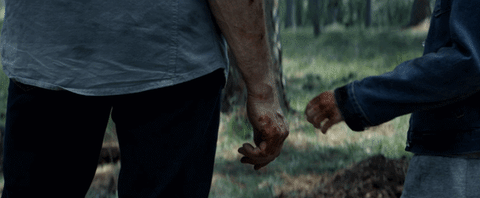
Hugh Jackman is given a great vehicle for his final performance as Wolverine. Adapted from Mark Millar’s Old Man Logan, the movie hugely surpasses its source material. While it maintains the gritty sense of violence from the graphic novel, its emotional substance is much more… substantial. Logan is a superhero film that finds a distinctive voice both in terms of its visuals and its temperament. Its characters aren’t simply grappling with “doing the right thing” but with debility, lethargy, loneliness and remorse. Jackman and Patrick Stewart explore these themes expertly. They’re accompanied by Dafne Keen’s standout performance as Laura/X-23 forming an emotional crux to carry the story. It’s a story that stands out from the others in its genre, and one that I certainly consider one of the best.
4. Get Out
Directed by Jordan Peele
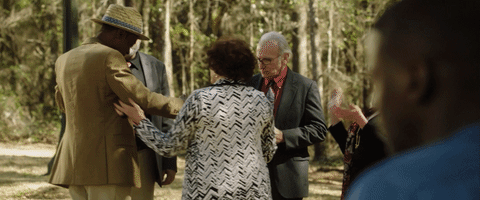
In Jordan Peele’s directorial debut, he manages to tell a story that is remarkably relevant and important, without ever losing his distinctive creative voice. Get Out is very much a horror movie, but Peele lends a fair bit of levity whenever he can. He drops scares that are so jarring they’re practically self aware. The movie is sold by Daniel Kaluuya’s incredible lead performance, as we’re left to ponder the sheer ridiculousness of his circumstances, slowly evolving into genuine terror. This movie has a very clear message, and despite its importance if there are those who may complain that it’s too heavy handed, they need only look to it’s masterfully crafted finale. Watching the movie in a crowded theatre gives you a shared experience, where we all jump at the same scares, laugh at the same jokes, but most importantly feel the injustice that presents itself at the end, and cheer for the twist. It’s this shared experience that is Peele’s master stroke. A perfectly enjoyable finale that leaves us pondering the very real message of the film.
5. Wonder Woman
Directed by Patty Jenkins

This is the most important superhero film since 1976’s Superman. Bringing to life the most iconic female superhero of all time took a long time to happen but it delivers in spades. Patty Jenkins has given the DCU it’s finest film yet, establishing a convincing mythos with interesting characters. Amidst DC’s penchant for dark brooding characters, Diana is a breath of fresh air: a hero that is compassionate and optimistic, even slightly naive. This lends to a truly compelling character arc that allows her to learn firsthand how complicated “the world of man” is. Gal Gadot commands the lead role expertly. She is the most convincing superhero performance since Christopher Reeve, and just like him it’s to bring to life an icon- a role model that she will forever be associated with.
6. Blade Runner 2049
Directed by Denis Villenueve
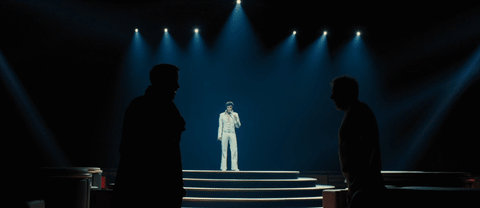
It is truly incredible that a sequel made 25 years after its predecessor can maintain the same tone and feel of the original, while lending a new creative voice. The original Blade Runner is one of sci-fi’s most contemplative stories, and it’s incredible that 2049 doesn’t do anything to damage this aura. It asks important questions while expanding on the franchise’s greater theme of what it means to be human. Denis Villeneuve is quickly becoming one of the most distinctive visual filmmakers currently working in Hollywood, and with this movie and Arrival it’s clear to see why. Hans Zimmer along with Benjamin Wallfisch manages to deliver some of his best work in years with a soundtrack that pays homage to Vangelis’s iconic original score. And then there’s the legendary Roger Deakins-lighting each scene with a painterly stroke to add a bit of nuance to already strong performances.
7. Thor: Ragnarok
Directed by Taika Waititi

Perhaps more than any director in the MCU, Taika Waititi delivers his own distinctive creative voice to his entry in the franchise. While its easy to get carried away by the stunning 80’s visuals and synth score from Mark Mothersbaum, it’s Waiiti’s signature wit and charm that really shine through. He makes Thor, Loki and Hulk (and Banner) more likeable than they’ve ever been in the MCU and introduces new characters like Valkyrie and the Grandmaster that are instantly noteworthy. Stellar performances from practically the whole cast help to sell this, and we’re left with a movie that fully entertains while gearing us up for the MCU’s next big offering.
8. The Post
Directed by Steven Spielberg
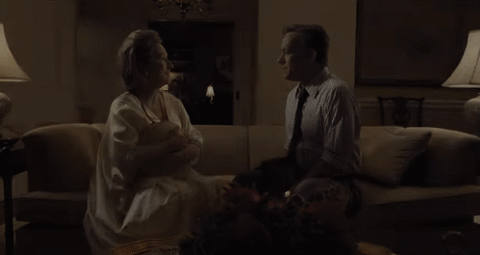
Amidst all the hoopla surrounding Ready Player One, Spielberg manages to sneak away and make a movie with his dream team of Tom Hanks, John Williams and Janusz Kaminski. And include Meryl Streep. I mean, just on paper this looked to be a sure-fire success, and shockingly it doesn’t disappoint. It is absolutely a movie that speaks volumes about the current political climate in the United States, but it also honours the importance of investigative journalism and freedom of the press. Hanks delivers an incredible performance, but it is purely to support Streep’s powerhouse portrayal of Katharine Graham. She charts a fascinating and incredibly relevant character arc to show us just how important it is to find your voice and your courage in the face of prejudice.
9. The Big Sick
Directed by Michael Showalter

Being such an incredible comedic talent, Kumail Nanjiani is finally given a chance to create a personal story. Along with his wife Emily V. Gordon they deliver a comedy movie that is so much more than just funny. It is deeply affecting, introducing us to two leads that are charming and worth rooting for. Culturally, relationally and physically, they contend with serious struggles that makes their character arcs incredibly meaningful. This is one of the strongest screenplays of the year and a testament to passionate storytelling.
10. The Shape of Water
Directed by Guillermo Del Toro
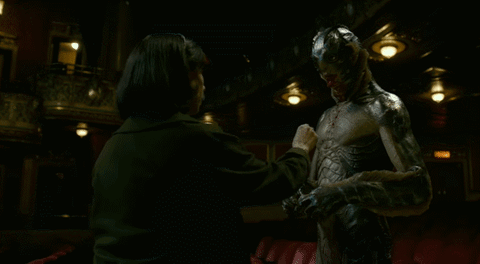
The Shape of Water is very much Guillermo Del Toro at his best- telling an extremely humanistic story under a fantastical lens. As per most of his movies, it features an isolated hero searching for self-actualization. Mirroring this character with that of a monster, he subverts the idea of abnormal for a sense of harmony. He trusts his audience to be empathic, to see the benevolence in the creature and the compassion in Eliza. This is balanced by his clear depiction of immorality in Michael Shannon’s Colonel Stickland. Supported by incredible compositions from Alexandre Desplat and ethereal cinematography from Dan Laustsen, Del Toro once again proves that he is one of Hollywood’s most affecting storytellers and that even the most high concept fantasy stories can be poignant ones.
Honorable Mentions
War for the Planet of the Apes (Directed by Matt Reeves), God’s Own Country (Directed by Francis Lee), Mudbound (Directed by Dee Rees), Call Me By Your Name (Directed by Luca Guadagnino), Three Billboards Outside Ebbing, Missouri (Directed by Martin McDonagh), The Florida Project (Directed by Sean Baker), Phantom Thread (Directed by Paul Thomas Anderson), Logan Lucky (Directed by Steven Soderbergh), The Disaster Artist (Directed by James Franco), Wind River (Directed by Taylor Sheridan)
#fandumb#fandumb reviews#review#movie review#movie recommendation#2017#2017 film#best of 2017#film review#film blog#star wars#episode 8#lady bird#get out#wonder woman#logan#xmen#blade runner 2049#blade runner#thor ragnarok#mcu#the post#the big sick#the shape of water#yyc#yycblogger#yycnow#yyc film review#yyc film
3 notes
·
View notes